-
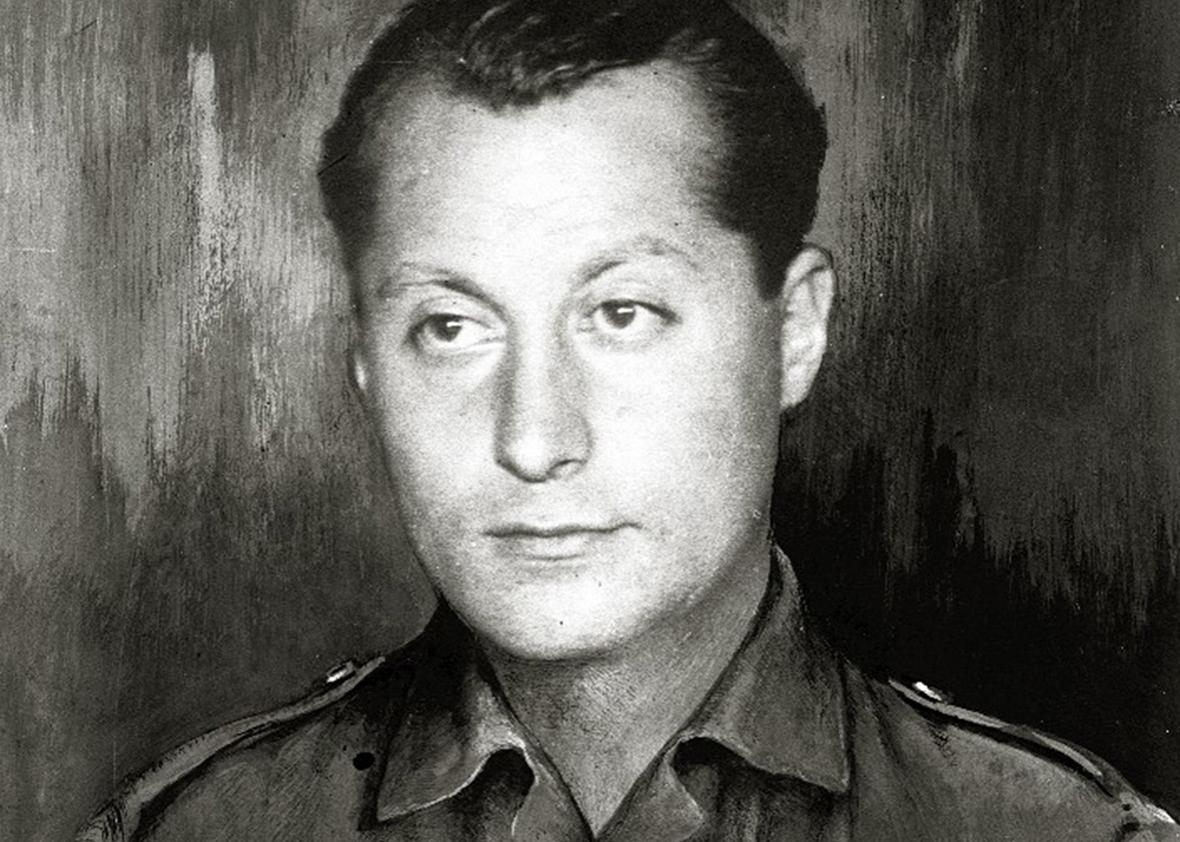
Authoritarianism in Spain | Between The World Wars
In 1918 Spain was still a nation in which local loyalties contested with national sentiment. Catalonians and Basques continued to work toward separate states, and though the Catholic religion had united Spaniards against Muslims in the Middle Ages and against Protestants in the sixteenth and seventeenth centuries, the church was no longer so strong a…
-

Authoritarianism in Iberia | Between The World Wars
In the troubled years between the wars, nondemocratic authoritarian governments emerged not only in Italy and Germany but also in Spain, in Portugal, in the successor states to the Habsburg Empire (except Czechoslovakia), and in the other states of eastern and southeastern Europe.
-
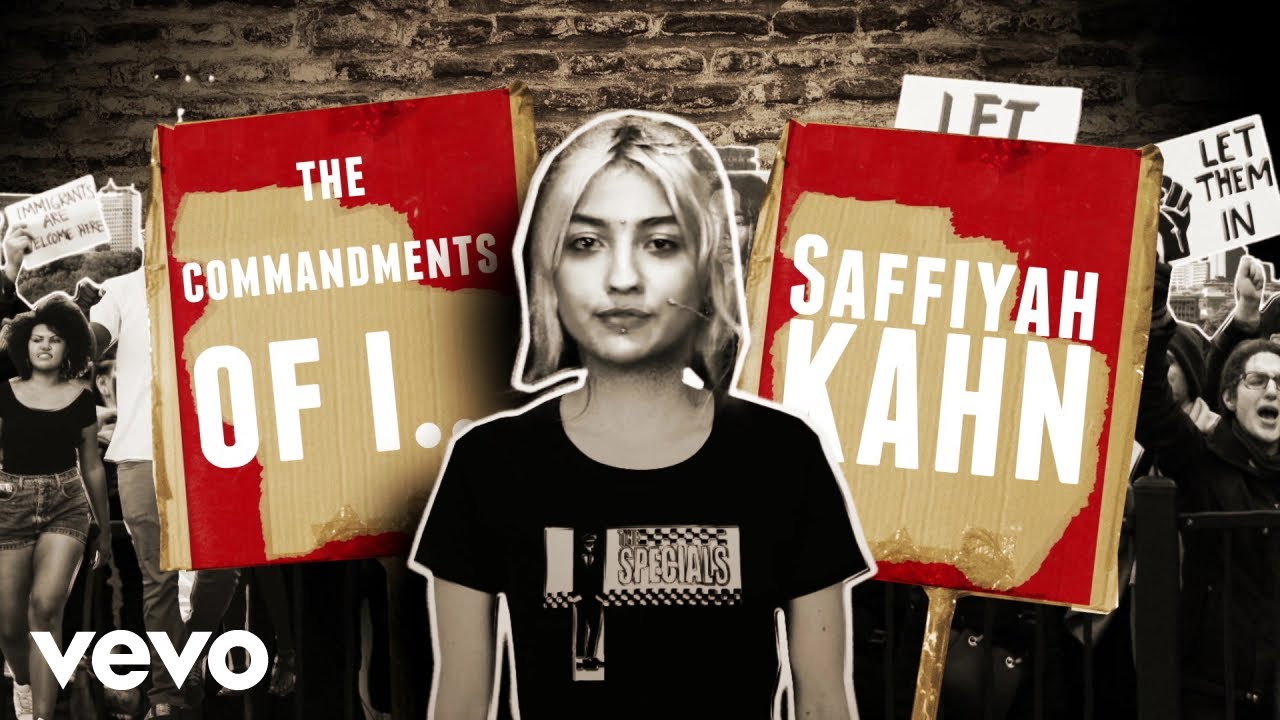
Ten Commandments for Fascists
By 1934 the fascists had pressed their campaign to the point where they could announce a set of ten “secular commandments” that emphasized their militarism, the idea of the garrison state, and the cult of the personality of it Duce (the Leader). 1. Know that the Fascist, and in particular the soldier, must not believe…
-
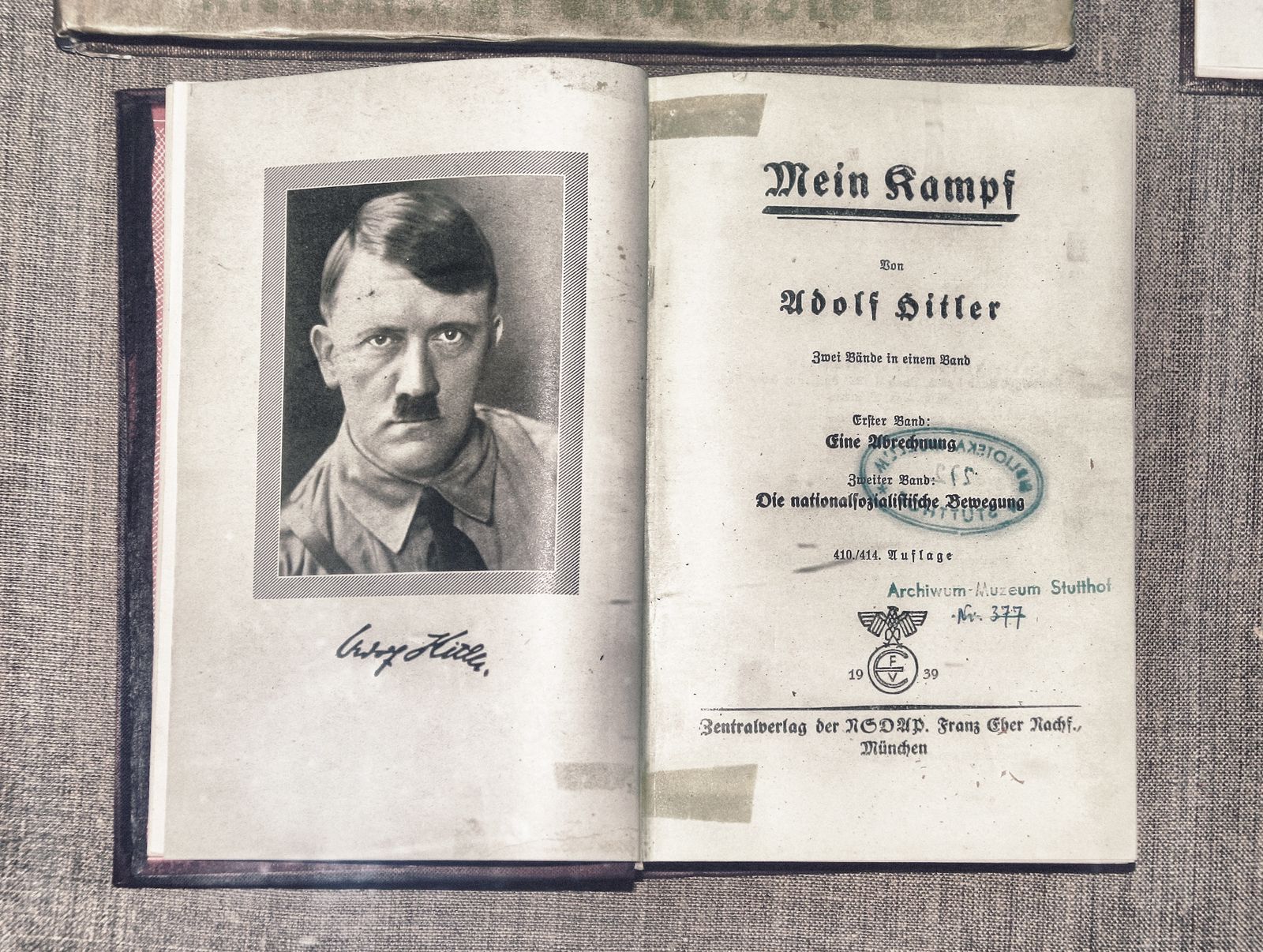
Hitler’s Racism and Political Theory in Practice | Between The World Wars
Soon after the passage of the enabling law, Hitler struck the first of his many blows against the Jews. In a country of approximately 60 million people, practicing Jews were less than 1 percent of the population. The Jews had become leading members of the professions and the arts and had made outstanding contributions to…
-

Hitler’s Dictatorship | Between The World Wars
Now Hitler could act as he chose, unimpeded by the laws. He instituted a ministry of propaganda under Josef Goebbels (1897-1945). He stripped the state governments of their powers and appointed governors from Berlin who could override the state legislatures. When Hindenburg died in August 1934, Hitler became president as well as chancellor, but he…
-
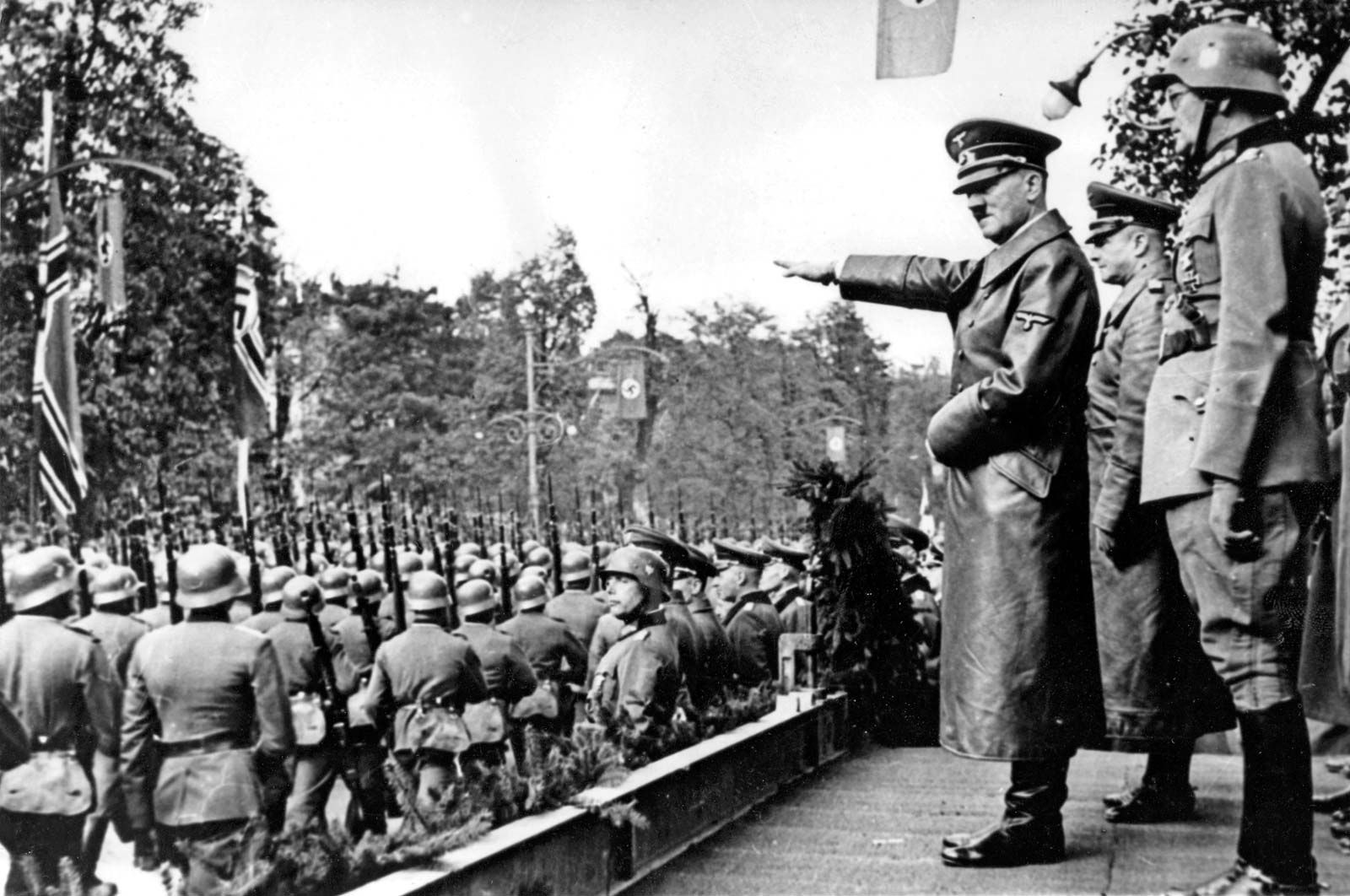
Germany Under Hitler, 1933-1939 | Between The World Wars
Hitler’s first weeks in power were devoted to transforming his chancellorship into a dictatorship. He dissolved the Reichstag and called for new elections. During the campaign, opponents of the Nazis were intimidated by violence and threats and were denied radio time and free use of the press. On the night of February 27, a fire…
-
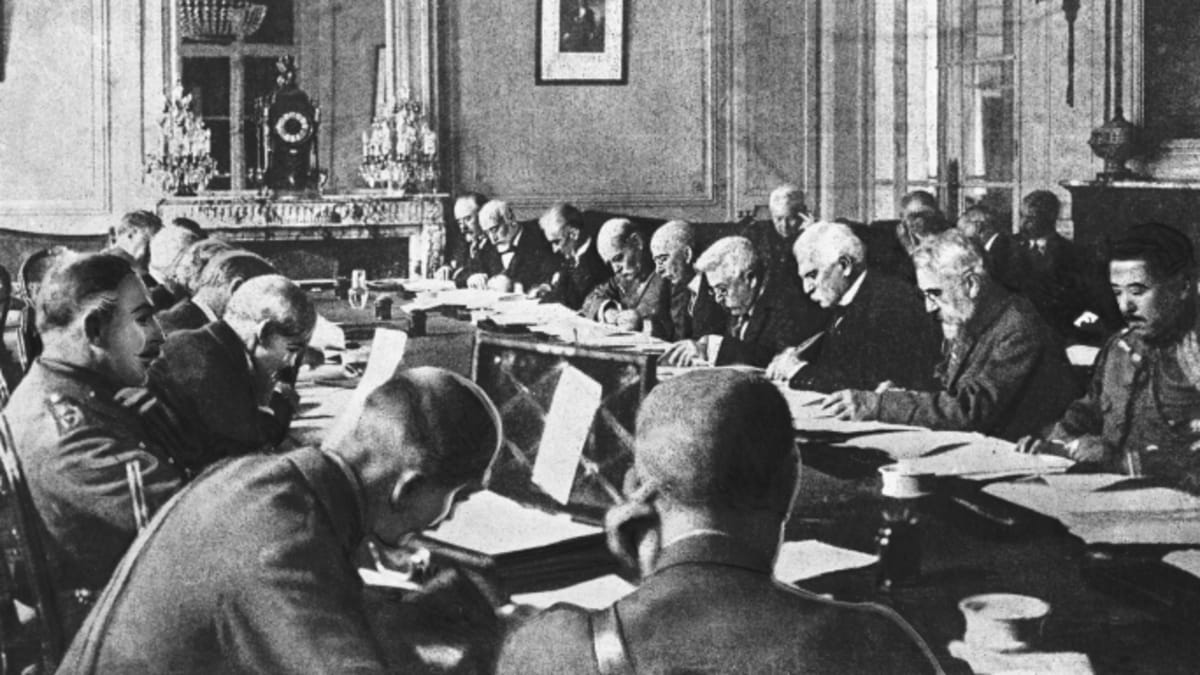
Germany and World Depression, 1929-1933 | Between The World Wars
But the economic depression had begun to knock the foundations out from under prosperity and moderation. An economic depression is a sharp and deep decline in trade and general prosperity. In the worldwide depression of 1873 to 1896, prices had fallen, agricultural distress had intensified—made worse in Europe by bad harvests followed by wet summers…
-

Economic Recovery, 1924-1929 | Between The World Wars
Communist disorders and the Nazi beer hall putsch marked the last phase of the inflation period. Shortly before Hitler’s move, Stresemann had given extraordinary financial powers to two tough-minded centrists, Hans Luther (1879-1962), minister of finance, and Hjalmar Schacht (1877-1970), banker and fiscal expert.
-
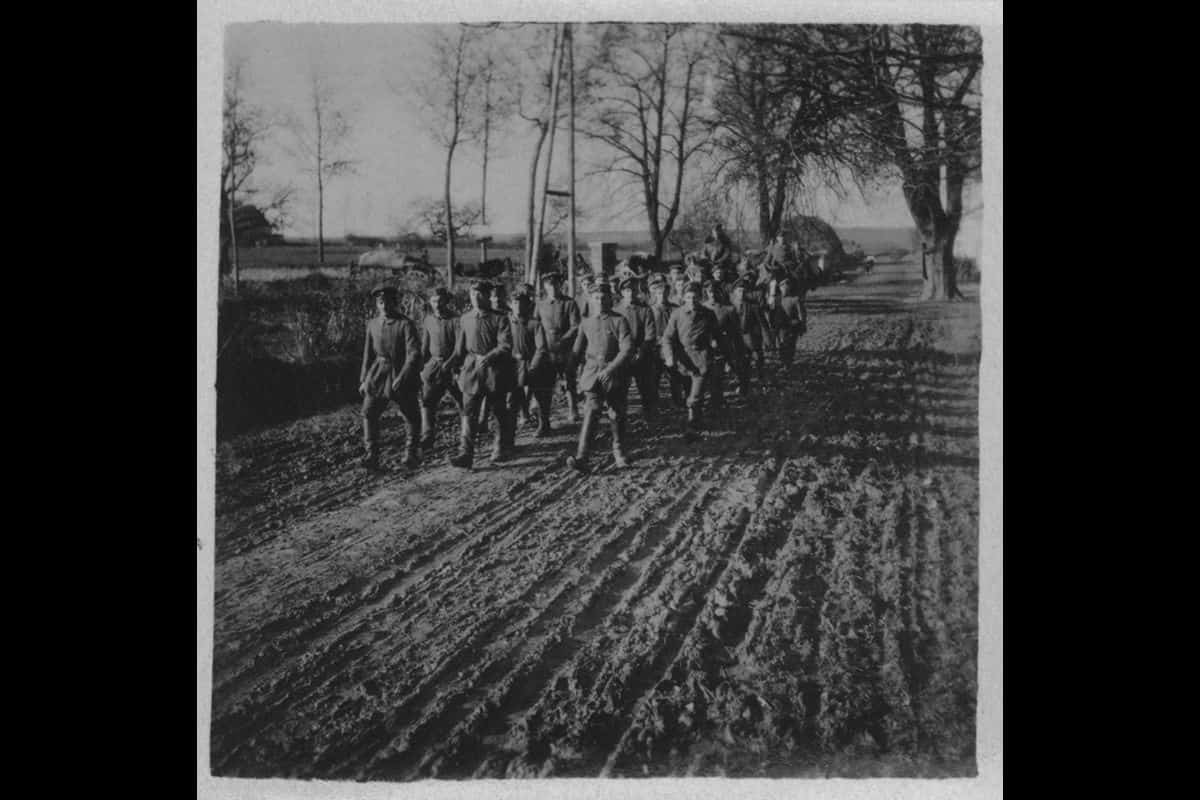
Years of Instability, 1918-1923 | Between The World Wars
Germans were shocked by their defeat in 1918. The military authorities who ran the German Empire during the last years of the war had not revealed to the public the extent of German reverses on the battlefield, and no fighting had taken place on German soil.
-

The Weimar Republic: Germany, 1918-1933 | Between The World Wars
Two days before the armistice of November 11, 1918, the German Social Democrats proclaimed a republic. On July 31, 1919, this republic adopted a constitution drawn up by a national assembly at Weimar; it is therefore known as the Weimar Republic.
-
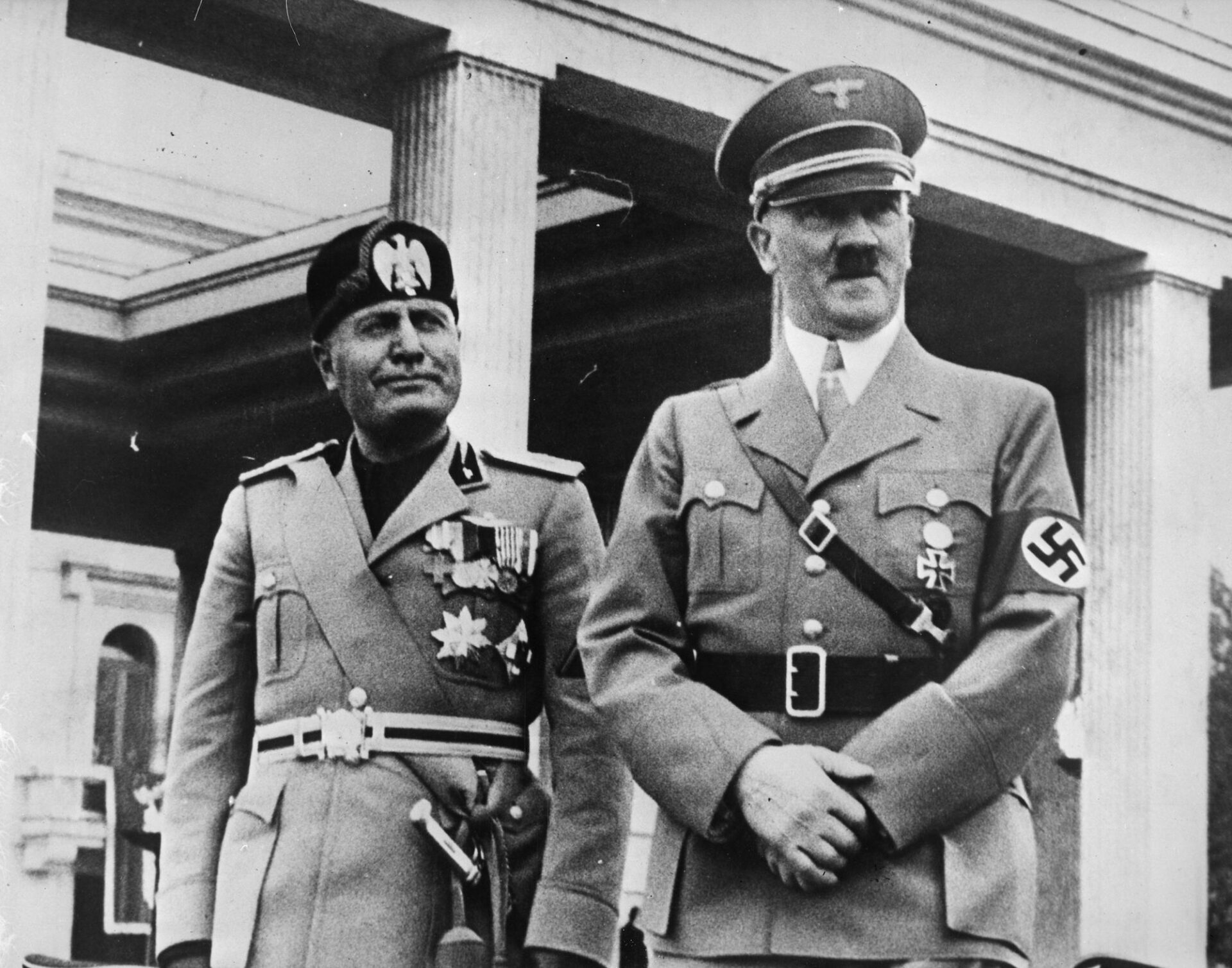
Fascist Dictatorship and Corporative State | Between The World Wars
Mussolini gradually turned his premiership into a dictatorship. A month after coming to office he obtained dictatorial powers that were supposed to last only until the end of 1923. Although the constitution theoretically remained in force, Mussolini took over the administration.
-

Comparing Fascism and Communism
Speaking at Naples in October 1922, Mussolini recognized that at the heart of fascism, as at the heart of nationalism, lay a vital lie—a belief held so strongly that it had the force from truth. He referred to this belief as a myth that, if universally accepted, would become reality:
-
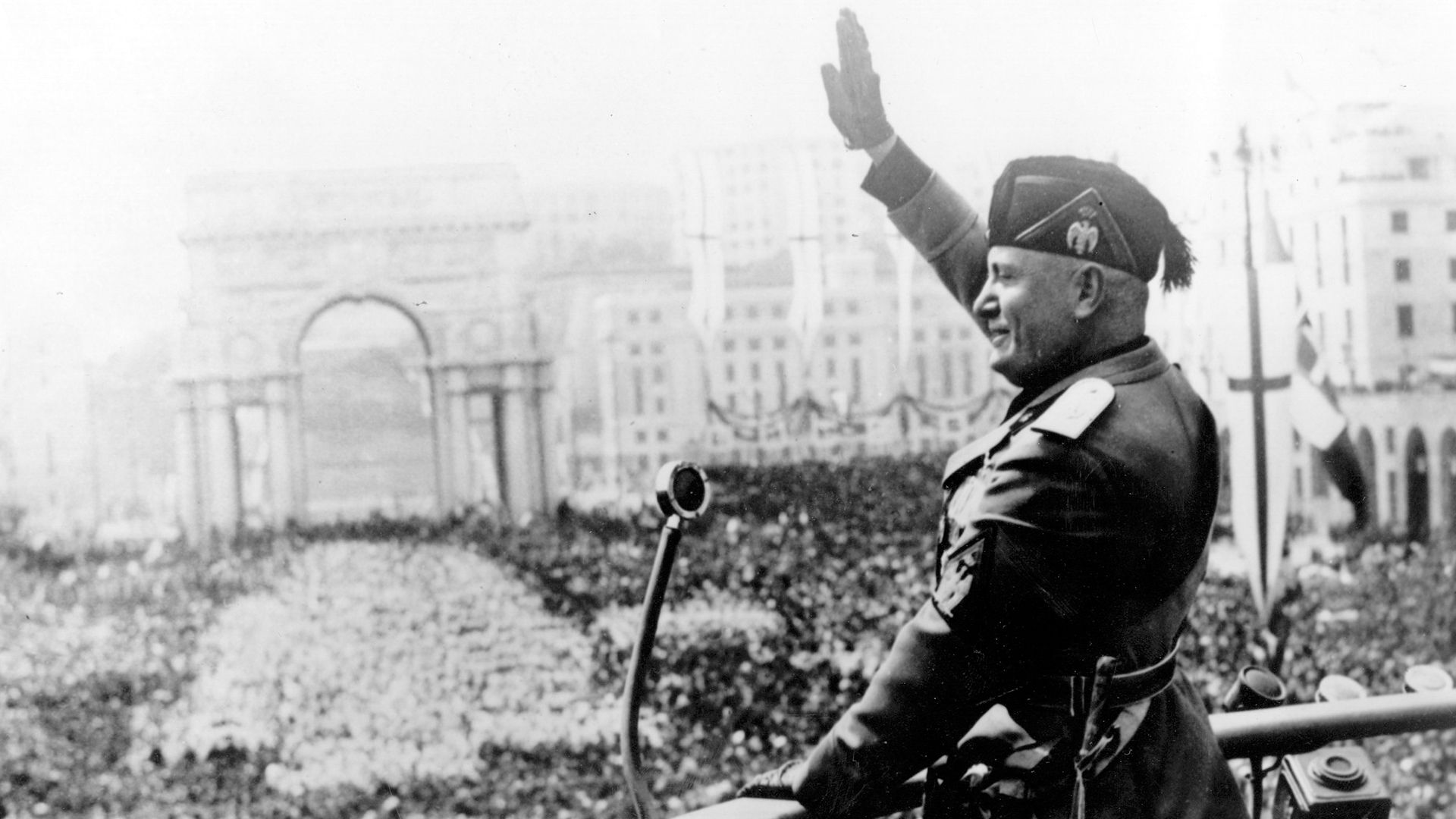
The Rise of Mussolini | Between The World Wars
Some Italians, supporting Gabriele d’Annunzio (18631938), seized the city of Fiume, which had not been awarded to Italy by the Treaty of London. D’Annunzio ran his own government in Fiume until the end of 1920. In November 1920, when the Italian government signed the Treaty of Rapallo with Yugoslavia by which Fiume was to become…
-
The First Triumph of Fascism: Italy | Between The World Wars
Although Italy was one of the victorious Allies, it finished World War I with a sense of defeat. Six hundred and fifty thousand Italians had been killed and a million wounded. Italian industry slumped immediately after the war, and within a few months 10 percent of the industrial workers were unemployed.
-
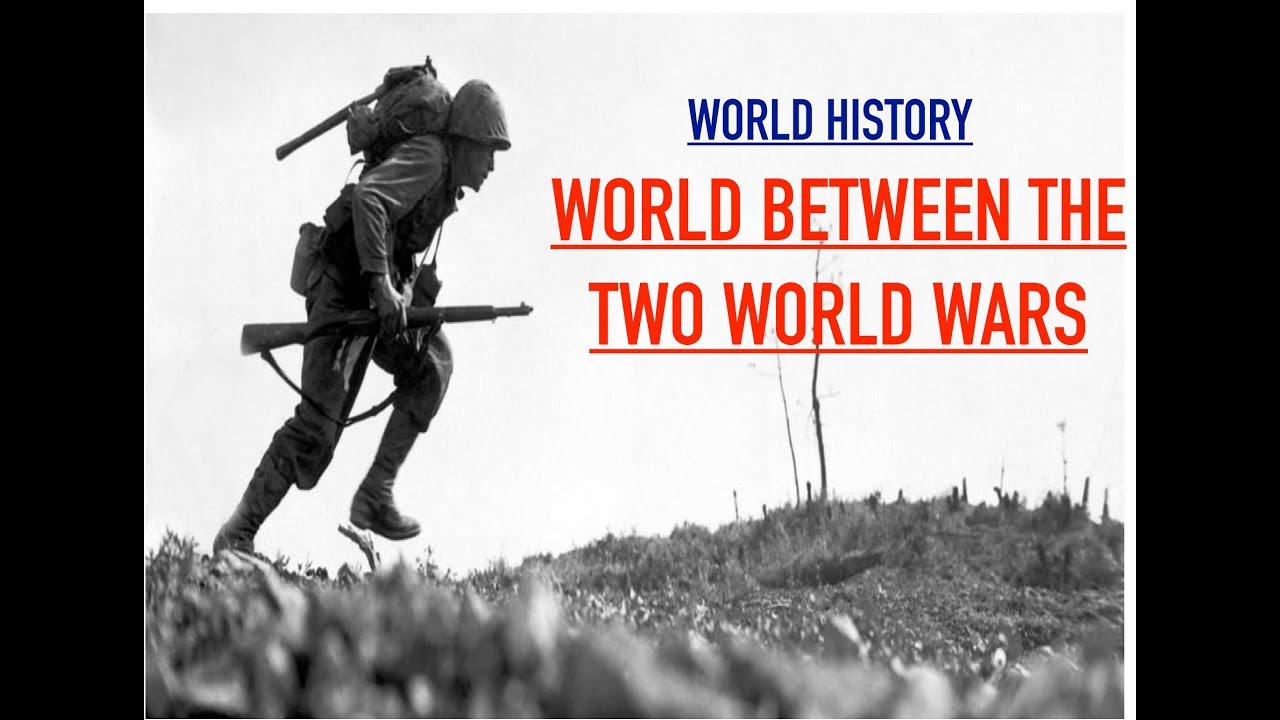
Between The World Wars
The Years Between World War I and World War II were marked more by movements to the extreme right than by movements to the extreme left, despite the Western democracies’ fear of Bolshevism. Beginning in the early 1920s a fascist regime took over in Italy and by the 1930s in Germany and Spain.
-
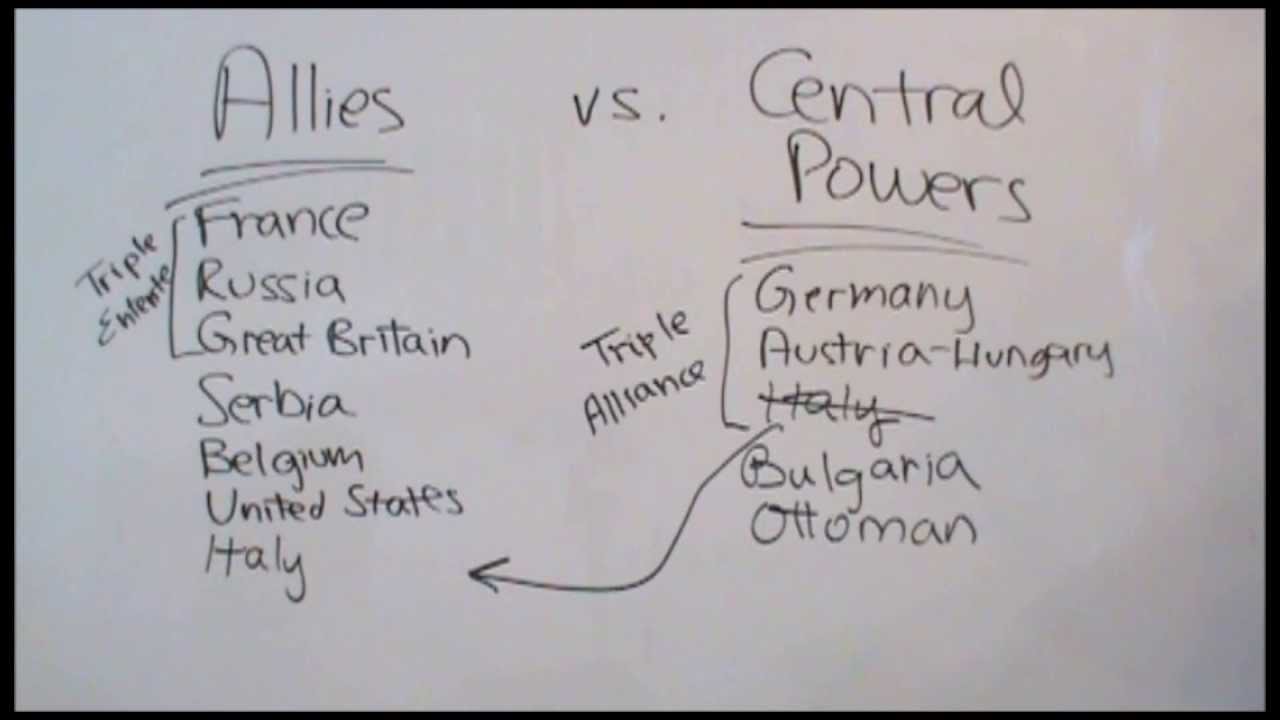
Summary | The First World War
The creation of a unified Italy and Germany altered the balance of power in Europe in the 1860s and 1870s. Nationalism, imperialism, great-power alliances, and public opinion—influenced by newspapers and photos—helped fuel tensions. By the early 1900s the Triple Alliance and the Triple Entente had taken shape. A naval arms race between Germany and Britain…
-

Civil War, 1918-1921 | The Russian Revolution of 1917
During the months following Brest-Litovsk, disorder in the countryside as a result of requisitioning and class warfare was swelled by the outbreak of open civil strife. During the war a legion of Czechs resident in the country and of deserters from the Habsburg armies had been formed inside Russia.
-
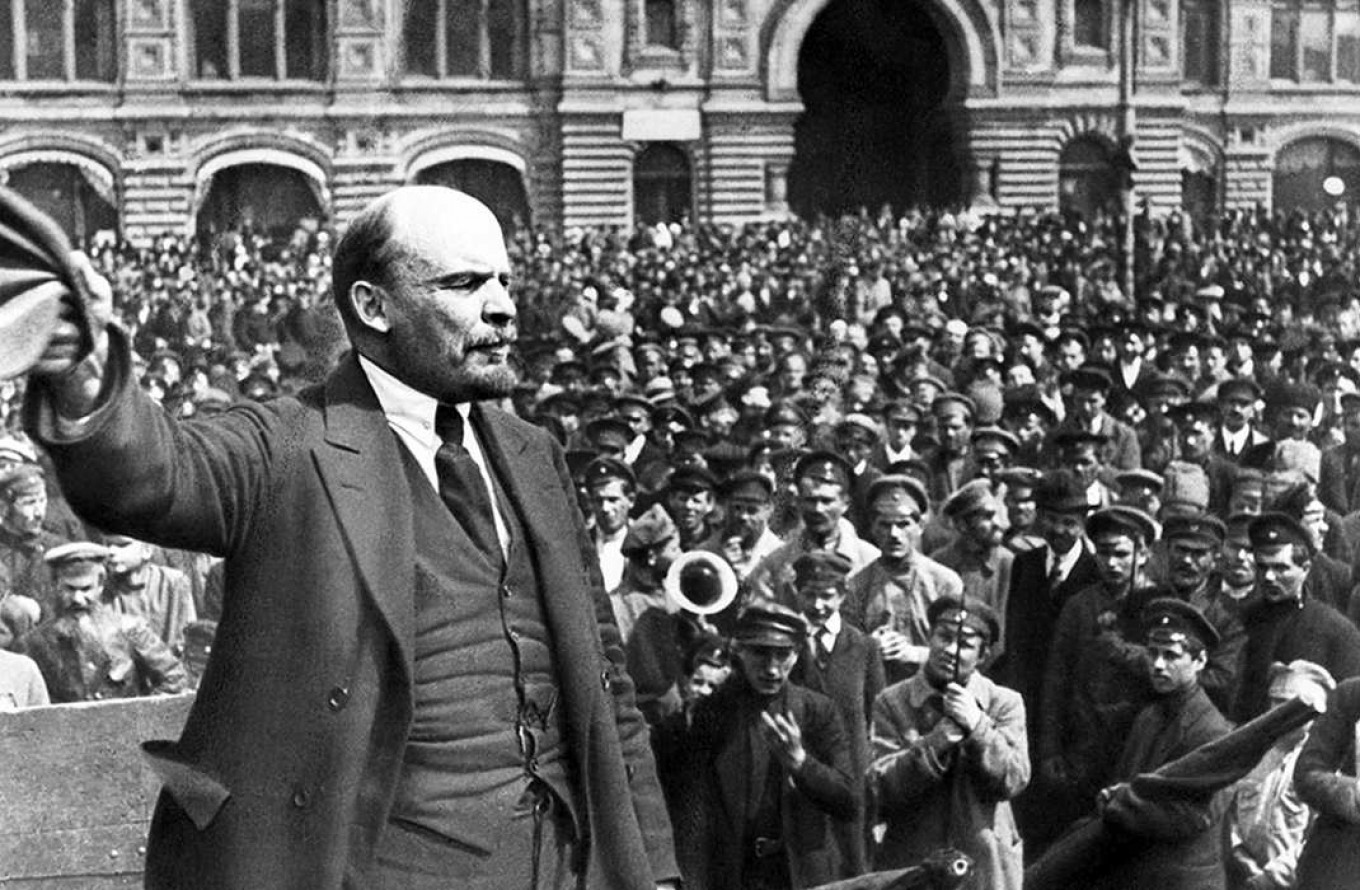
Lenin’s Address at the Finland Station
On the day Lenin arrived at the Finland station in Petrograd, he declared that the World War must be transformed into a series of civil wars, the bourgeois revolution into a social revolution, so that a crisis of European capitalism might be precipitated. In a memorable confrontation, he instantly revealed that he would not accept…
-
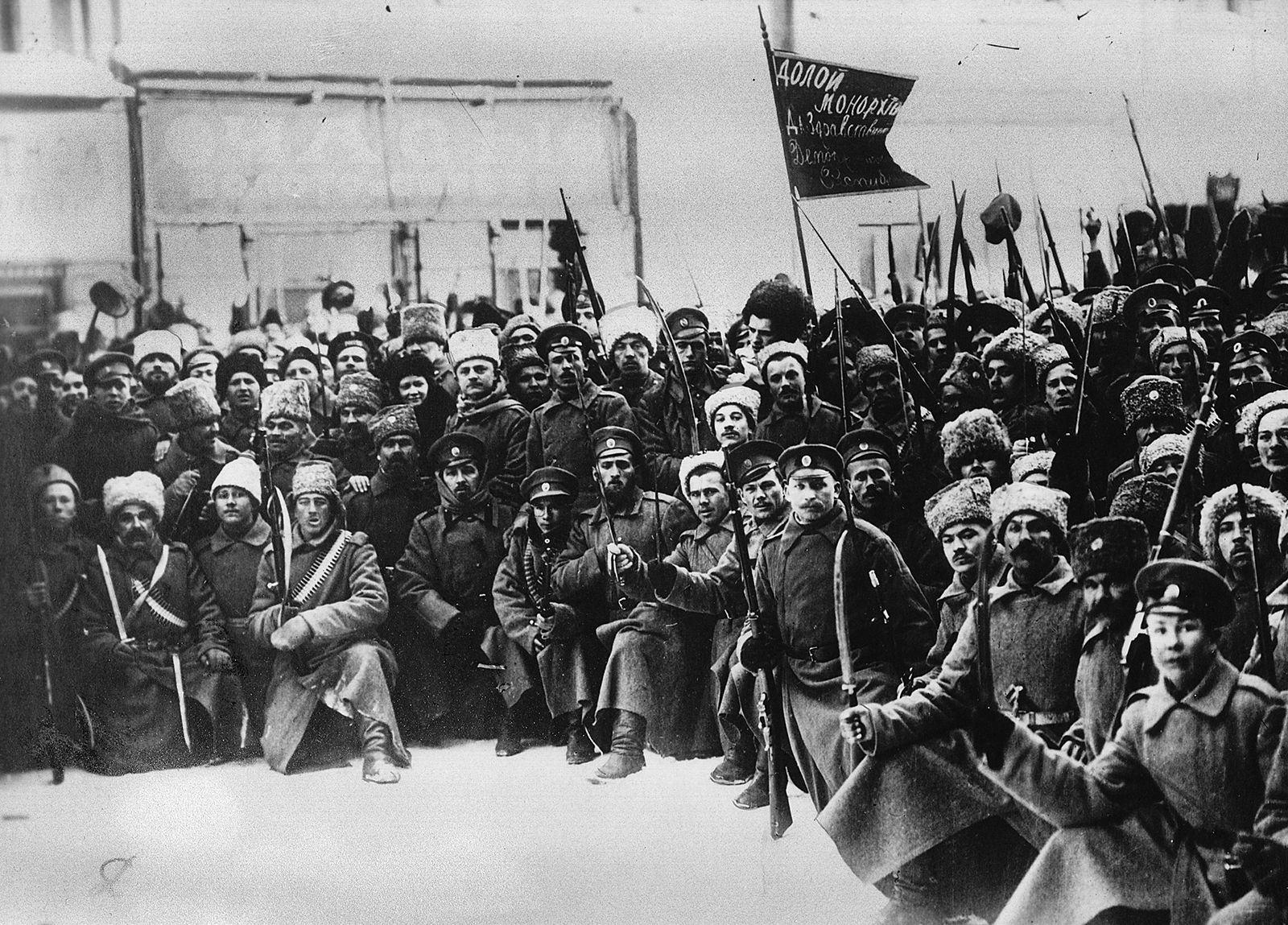
War Communism, 1917-1920 | The Russian Revolution of 1917
The first period of Soviet history, which runs from the end of 1917 to the end of 1920, is usually called the period of war communism, or military communism. The term implies that the main features of the period were deter- mined by military events; civil war raged, and foreign powers intervened on Russian soil.
-
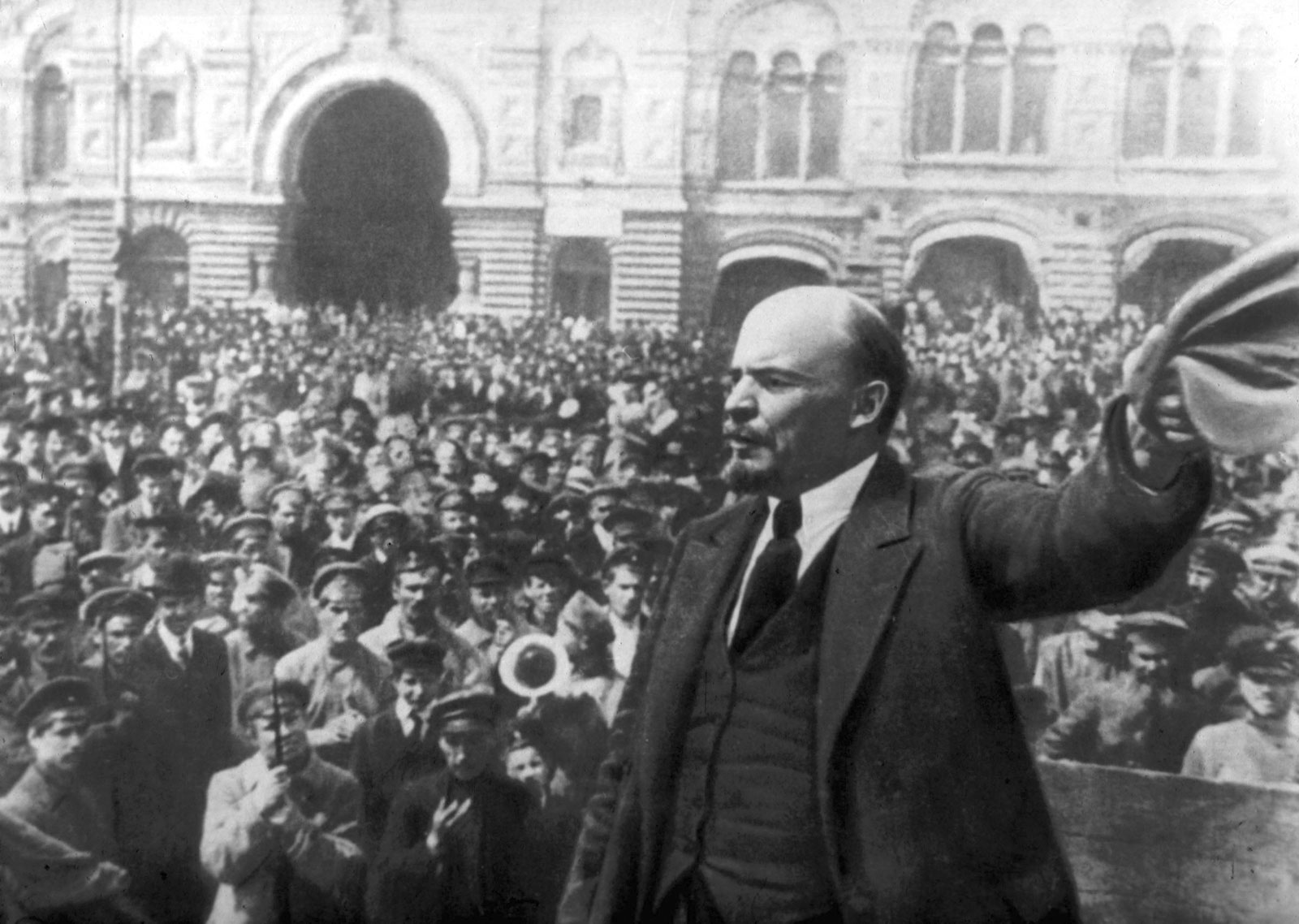
The November Revolution | The Russian Revolution of 1917
The provisional government faced a crisis. Kerensky, now war minister, emerged as the dominant leader. He failed to realize that it was no longer possible to restore the morale of the armies. A new offensive ordered on July 1 collapsed as soldiers refused to obey orders, deserted their units, and hurried home to their villages,…
-
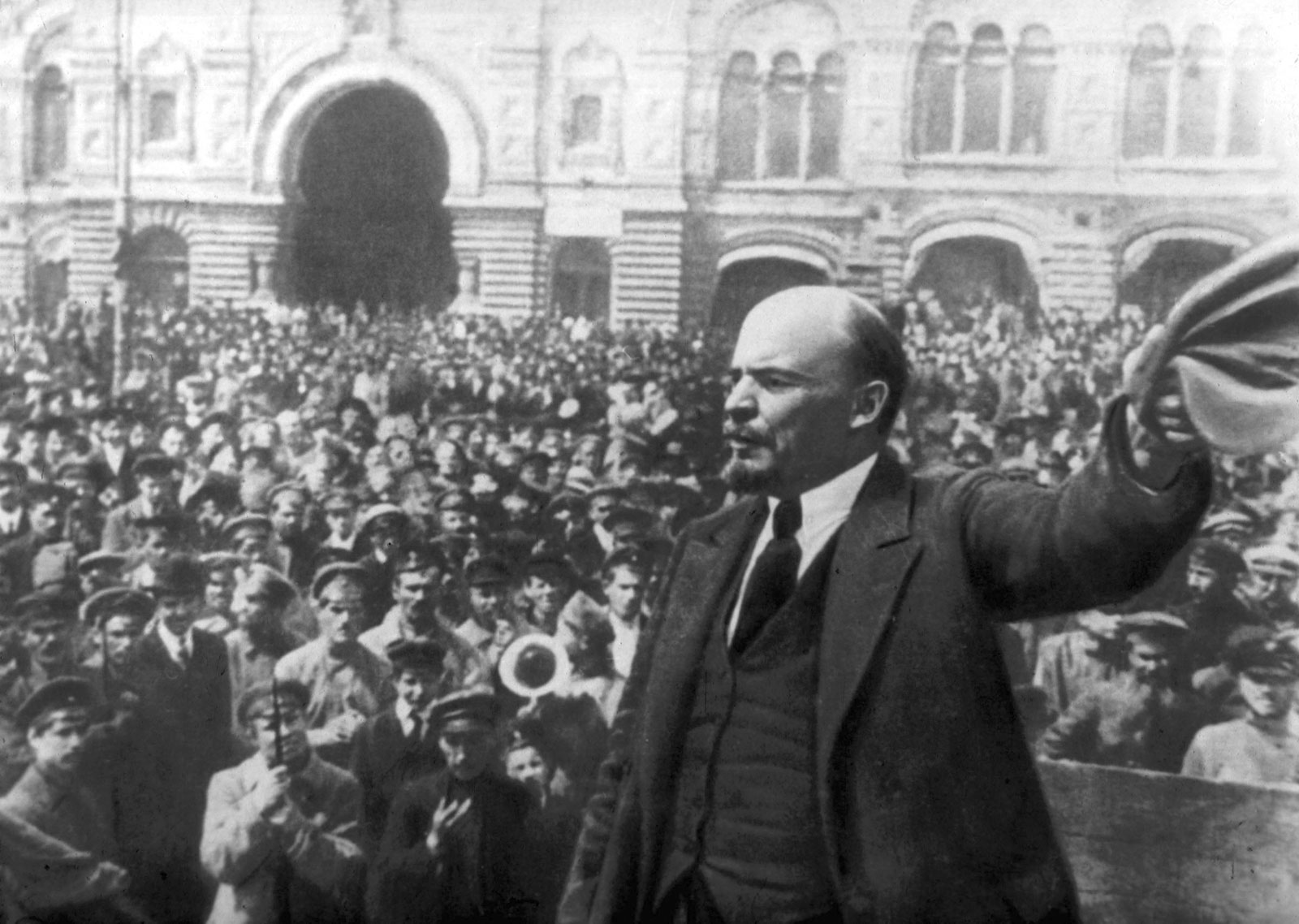
Lenin | The Russian Revolution of 1917
The most important of the returning Bolshevik exiles was Lenin. His real name was Vladimir Ilyich Ulianov (1870-1924), but in his writings he used the pen name Lenin, to which he sometimes prefixed the initial N, a Russian abbreviation for “nobody,” to tell his readers that he was using a pseudonym.
-
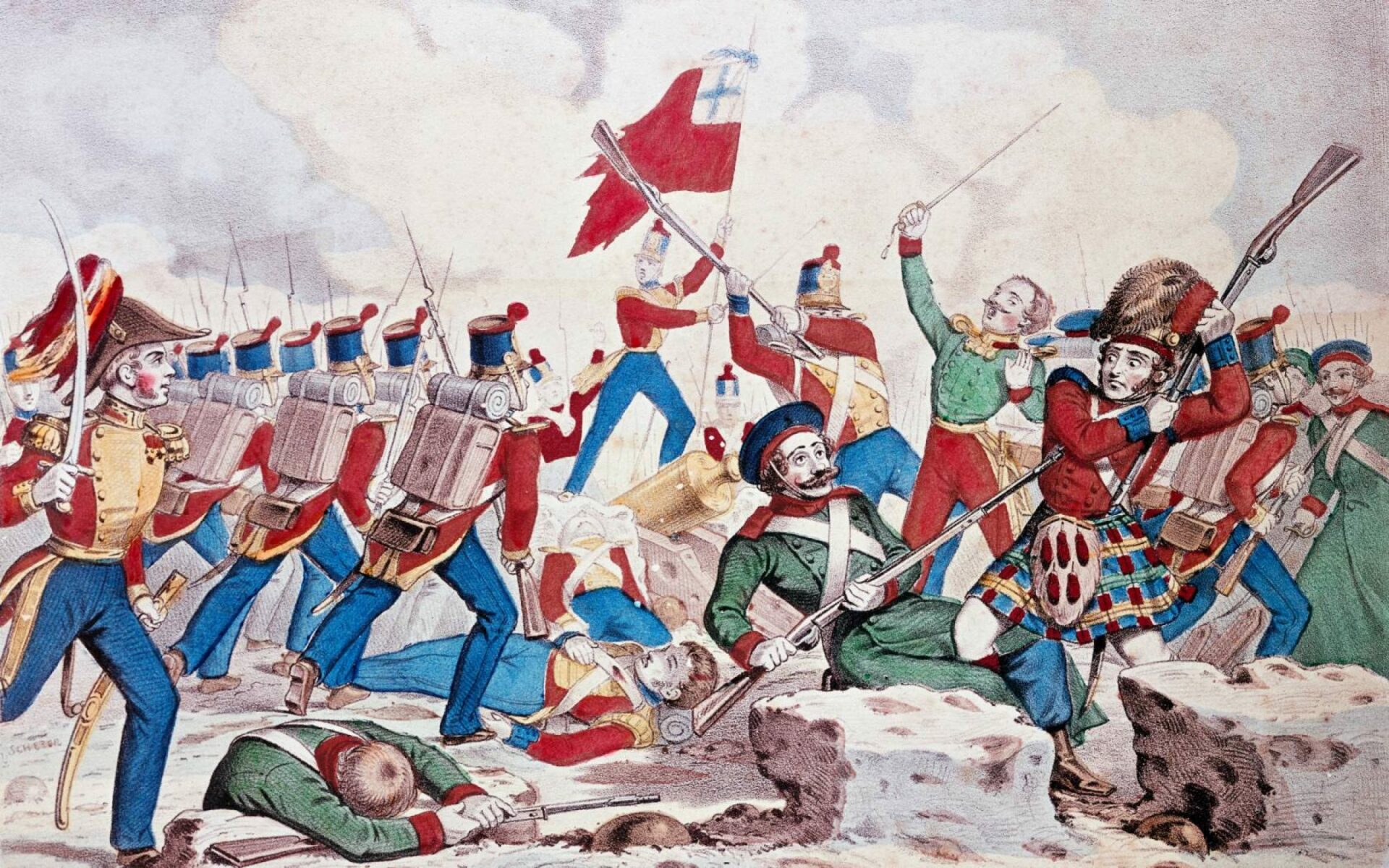
Simple Errors: The West and Russian History
The way in which certain simple matters of fact are sometimes dealt with in the West when the subject is Russia illustrates the problem of understanding the historical development of a relatively isolated nation. For example, for years some writers insisted that Lenin’s first name was Nikolai or Nicholas because of his use of the…
-
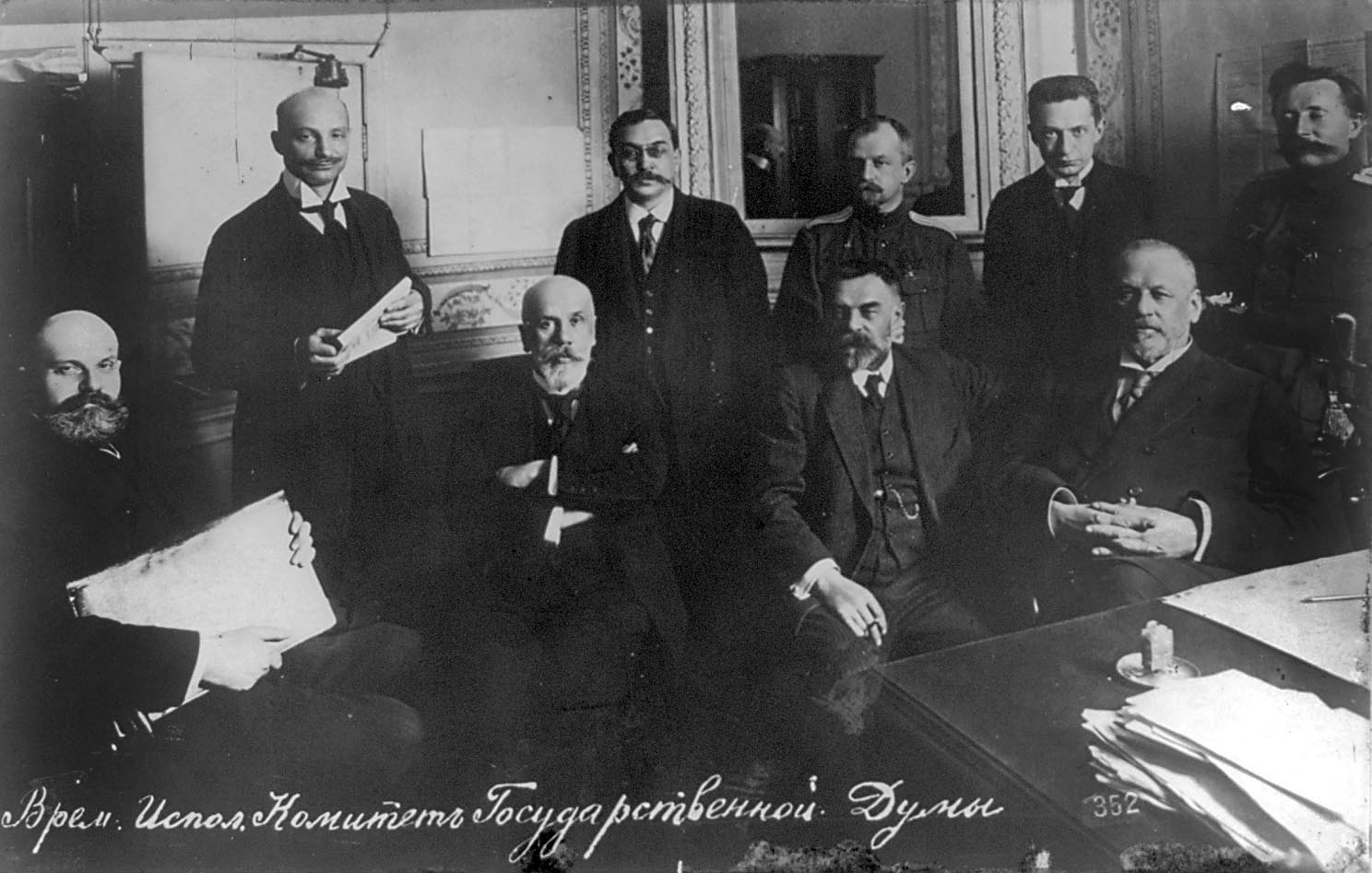
The Provisional Government | The Russian Revolution of 1917
The provisional government—which held office between mid-March and early November 1917—was a total failure. Russian moderates had no experience of authority. They were separated by a great cultural gulf from the lower classes. Their opportunity to rule came amid a fearful war, which they felt they had to pursue while reconstructing and democratizing the enormous…
-

The March Revolution | The Russian Revolution of 1917
By February only ten days’ supply of flour was left in the capital, and the regional commander set up a rationing system. Long lines, closed shops, and the prospect of starvation led to disorder. In the Duma “unfit ministers” were attacked. The left-wing deputies turned to the secret organizations, which had already been working up…
-

The Immediate Background to Revolution, 1914-1917 | The Russian Revolution of 1917
Russia was geographically isolated from the munitions and supplies that would otherwise have come from the Allies. Despite Russia’s great resources in agriculture and potential for industry, transportation was inadequate from the beginning, and when the trains were used to move troops, food shortages developed in the cities. Losses in battle were staggering from the…
-

The Russian Revolution of 1917
Though Russia was shaken by domestic crisis in 1914, the country greeted the outbreak of World War I with demonstrations of national patriotism. The Duma supported the war, while the left-wing parties abstained from voting for war loans but offered to assist the national defense. Yet it was the war and the regime’s failure to…
-
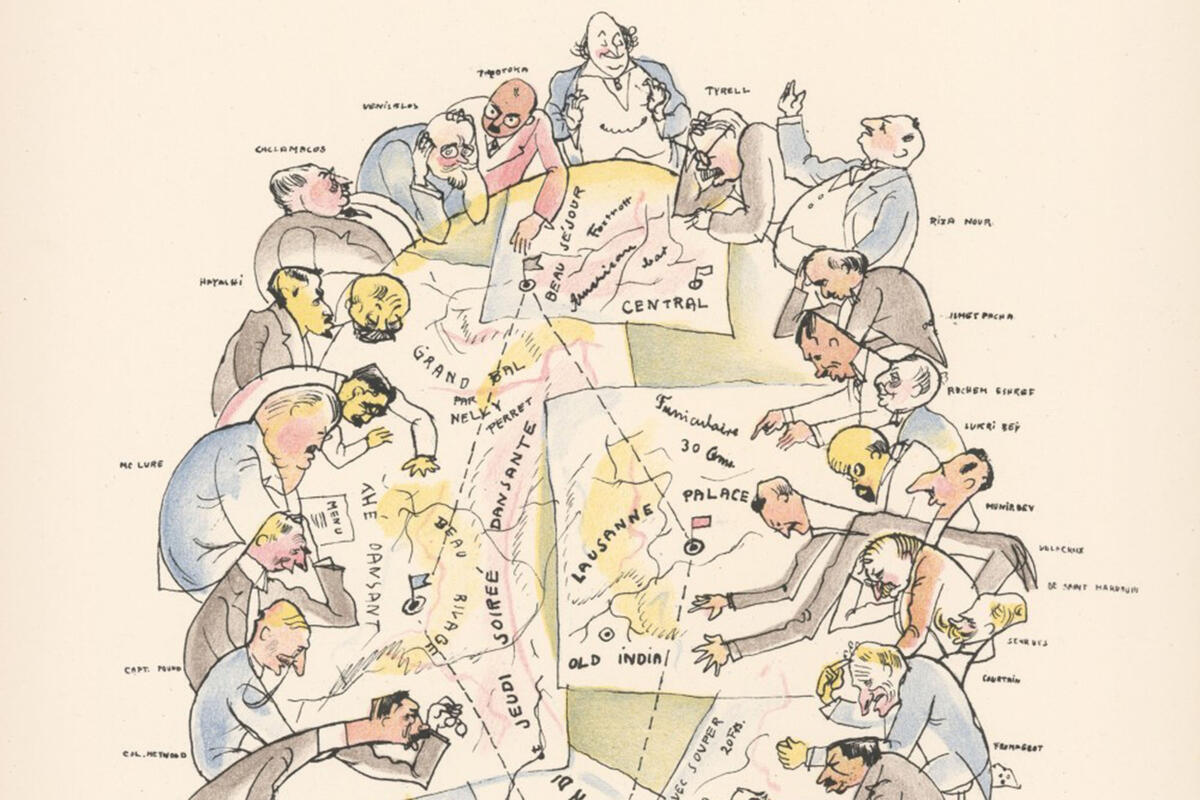
Peacemaking and Territorial Settlements, 1918-1923 | The First World War
The peace conference first met formally on January 18, 1919. Nearly thirty nations involved in the war against the Central Powers sent delegates. Russia was not represented. The defeated nations took no part in the deliberations; the Germans, in particular, were given little chance to comment on or criticize the terms offered them. German anger…
-
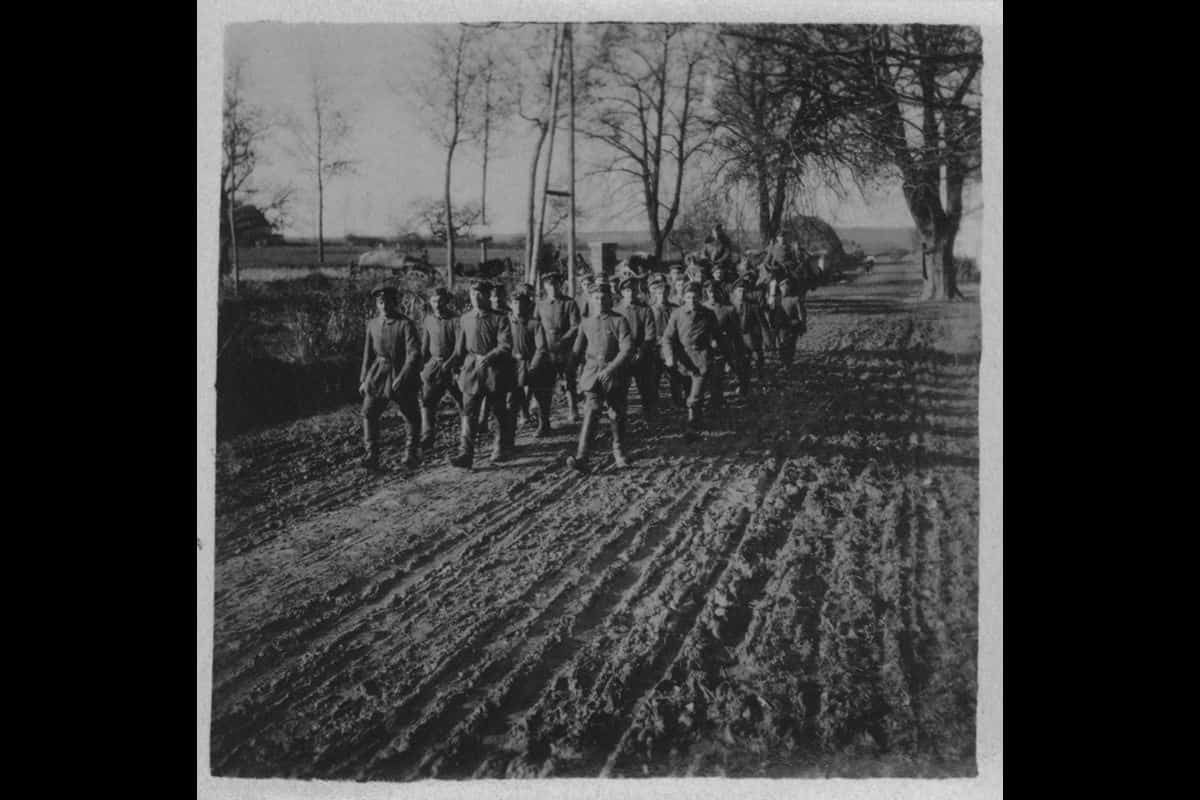
Postwar Instability | The First World War
The most worrisome crises were in Russia. No sooner had the Germans been forced to withdraw from the regions they had gained at Brest-Litovsk than the Allies sent detachments to various points along the perimeter of Russia—on the Black Sea, on the White Sea in the far north, and on the Pacific. The Allies’ dread…
-
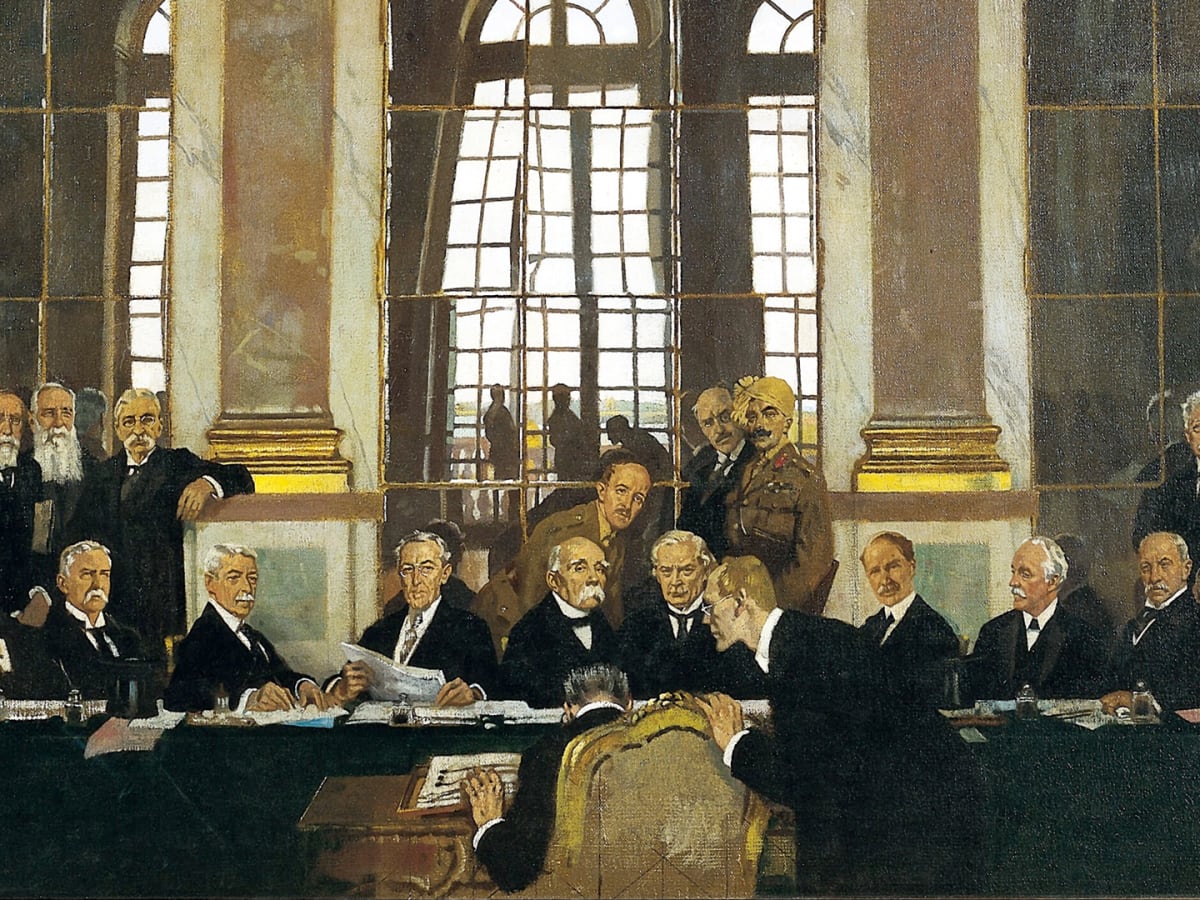
The Peace Settlements | The First World War
The warring powers met at Versailles to settle with the Germans and at other châteaux around Paris to settle with the rest. Peace congresses never meet in a world that is really at peace, for there is always an aftermath of local war, crises, and disturbances. In 1918-1919 these were so numerous and acute that…
-
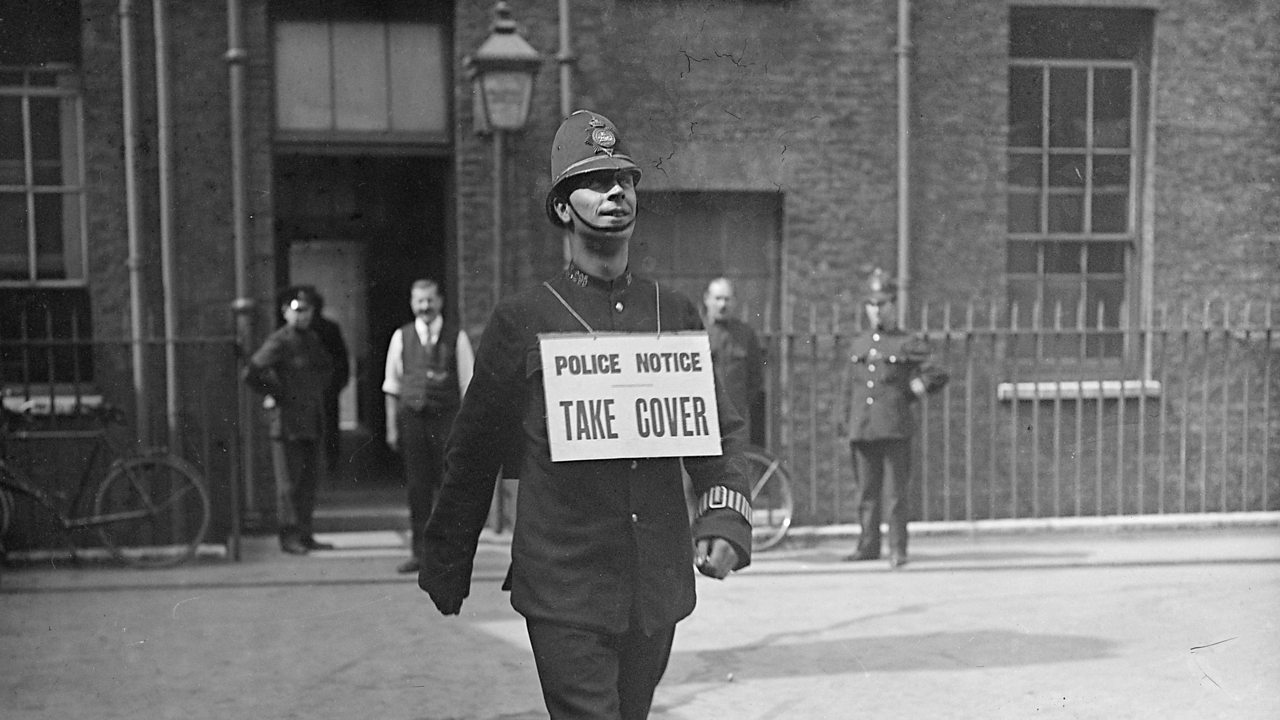
The Home Fronts | The First World War
In World War I soldiers and sailors were, for the most part, civilians, unused to military ways. Behind the front—subject to rationing and regimentation in daily living—families, too, were part of this great “total war.” They, too, bore up under it, though in France in 1917, after the bloody failure of the “one big push,”…
-

War in the Trenches
The war in the trenches was unremitting tedium punctuated by moments of intense action. Long after the war a distinguished British historian, Charles Carrington (1897-1981), who was a young man on the Somme, wrote of his experience:
-
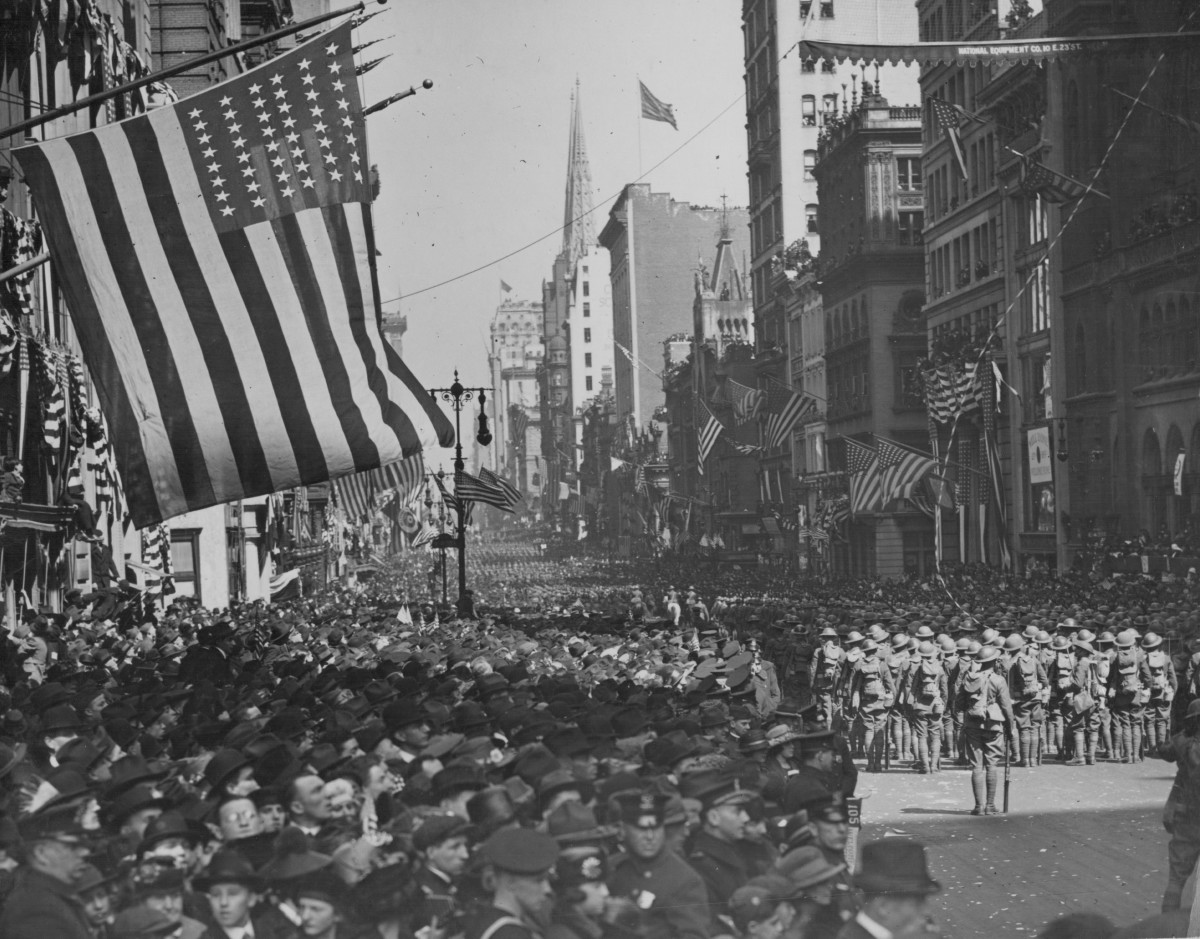
Allied Victory: The Entry of the United States | The First World War
Both sides knew that the entry of the United States, with its fresh forces and vast industrial capacity, would be telling, were the war to last another year. But the Central Powers anticipated victory before American forces could be in the field.
-
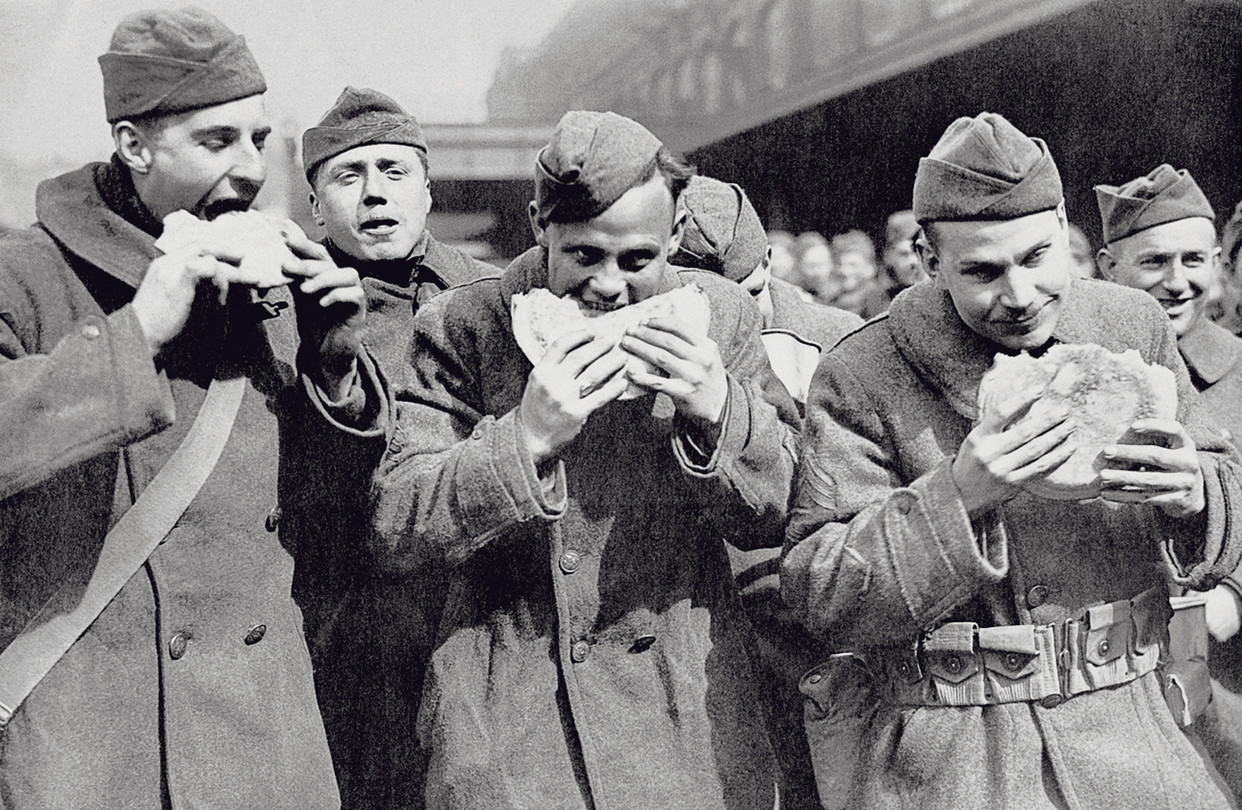
Allied Victory: New Weapons | The First World War
This war also saw the beginnings of air warfare. German dirigibles (known as Zeppelins) raided London many times in 1916 and 1917, and both sides made airplane bombing raids on nearby towns. But the total damage was relatively light and did not affect the final result. The airplane was more important for scouting. The fighter…
-
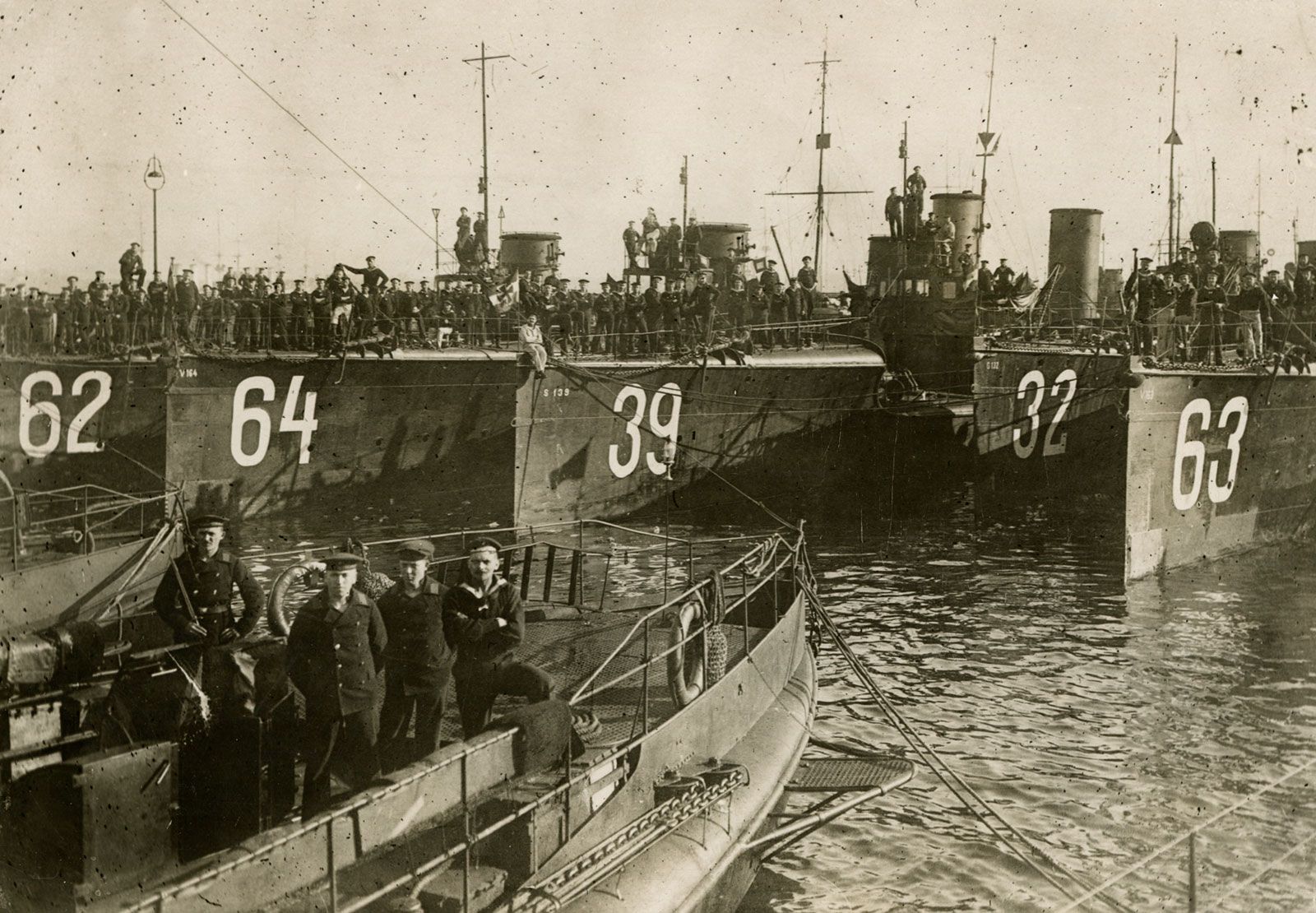
Allied Victory: The War at Sea | The First World War
In the long run British sea power and American supplies proved decisive. The Allied command of the sea made it possible to draw on the resources of the rest of the world, and in particular to transfer large numbers of British and later American troops to the crucial western front.
-

The "Blank Check"
There is some debate among historians as to just how sweeping the “blank check” given to Austria by Germany actually was. A report by the Austrian ambassador on his meeting with the kaiser at Potsdam on July 5, 1914, indicates what the Austrian believed to be the case:
-

Military Campaigns, The Near East and the Colonies | The First World War
This truly worldwide war, fought in the Near East, Africa, and the Far East, as well as in every ocean, made it clear that non-Continental events were no longer mere sideshows. The war in the Near East, in particular, would unleash nationalisms that continue to the present day.
-
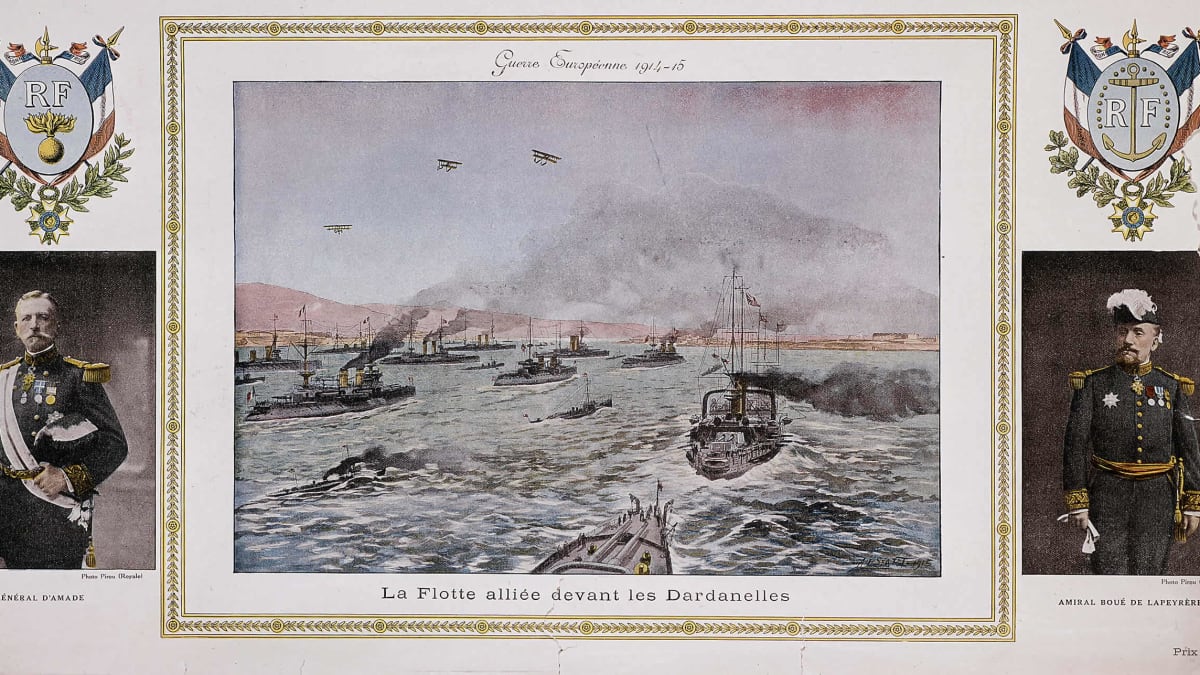
Military Campaigns, The Dardanelles and the Balkans | The First World War
Ultimately more significant was the Dardanelles campaign of 1915. With the entry of Turkey into the war on the side of the Central Powers in November 1914, and with the French able to hold the western front against the Germans, a group of British leaders decided that British strength should be put into amphibious operations…
-

Military Campaigns, The Italian Front | The First World War
In the meantime, in April 1915 Italy had concluded with Britain, France, and Russia the secret Treaty of London, which promised the Italians Trent and Trieste plus other lands at Austro-Hungarian and Turkish expense. In May the Italians formally declared war on Austria-Hungary, and a new front was added along the Austro-Italian frontier at the…
-
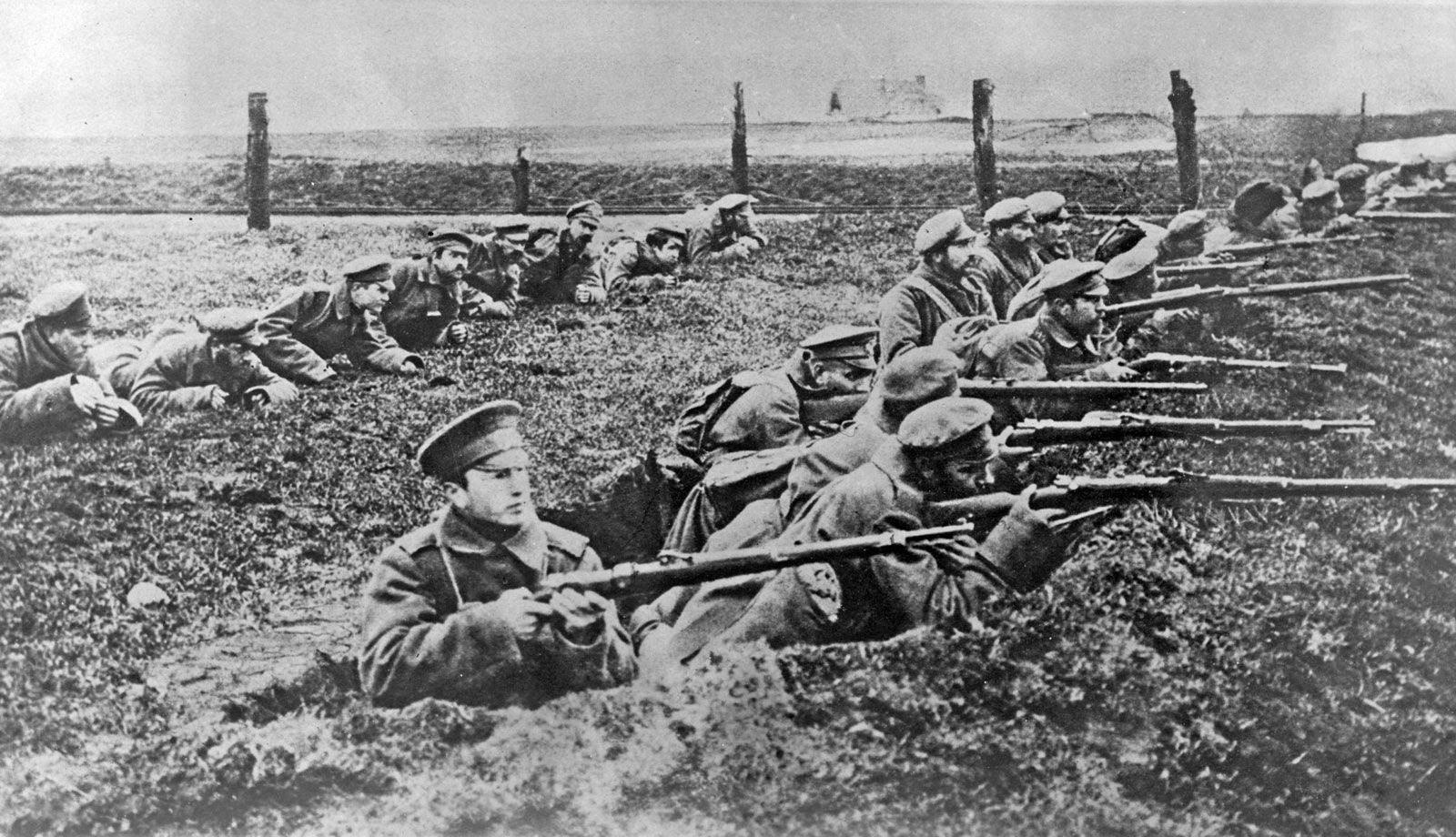
Military Campaigns, The Eastern Front | The First World War
The eastern front, where the Russians faced both the Germans and the Austrians, was crucial to Allied tenacity in the West. Millions of men were involved on both sides, and had the Russians not held out until the end of 1917, the Allies in the West could hardly have withstood the reinforcements that the Germans…
-
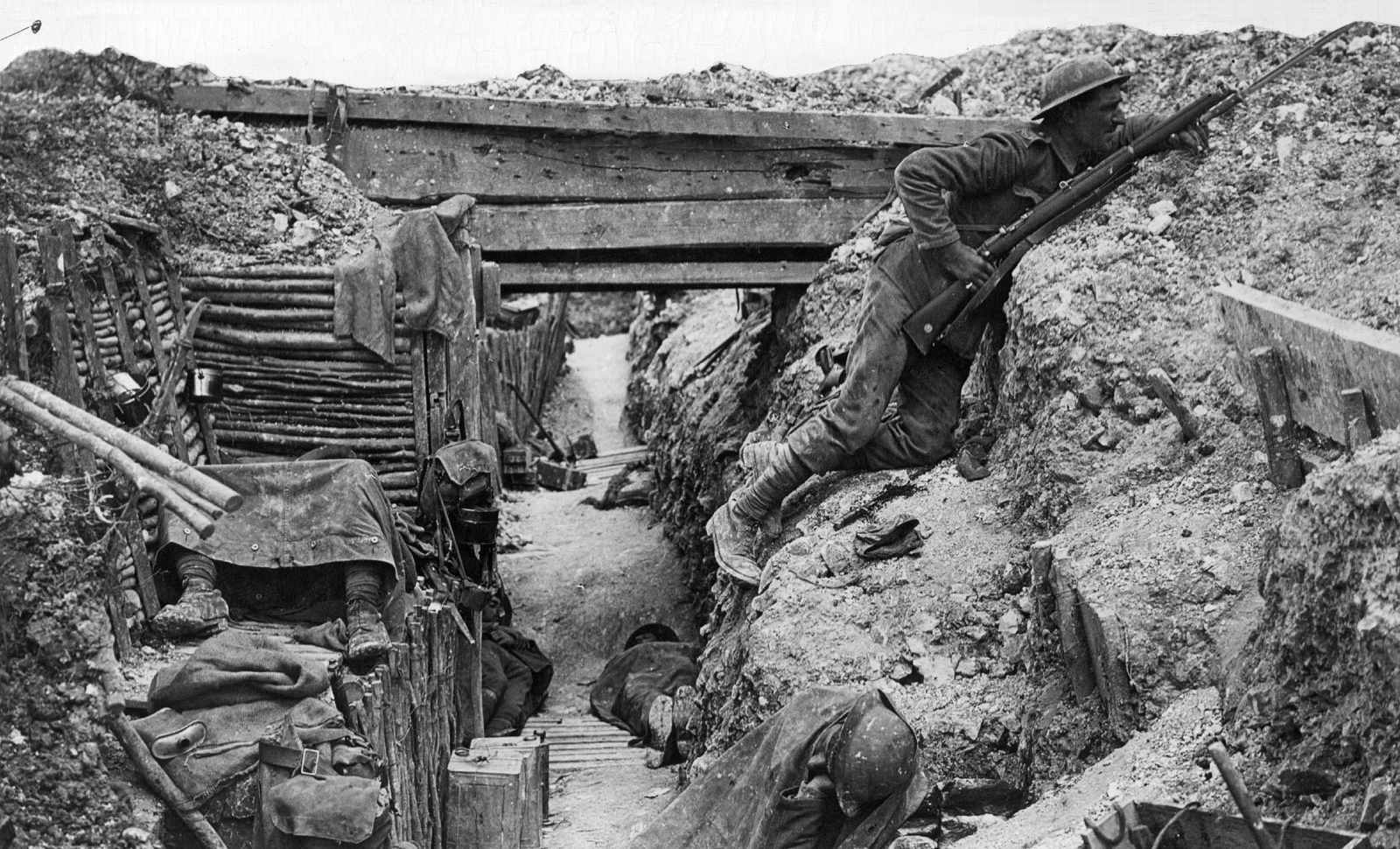
Military Campaigns, The Western Front | The First World War
The German attack through Belgium was the first stage in the plan prepared by Alfred Graf von Schlieffen (1833-1913), chief of the general staff from 1891 to 1906. The strong right wing was to take Paris and fall on the rear of the French, who would be pinned down by the left wing. With France…
-
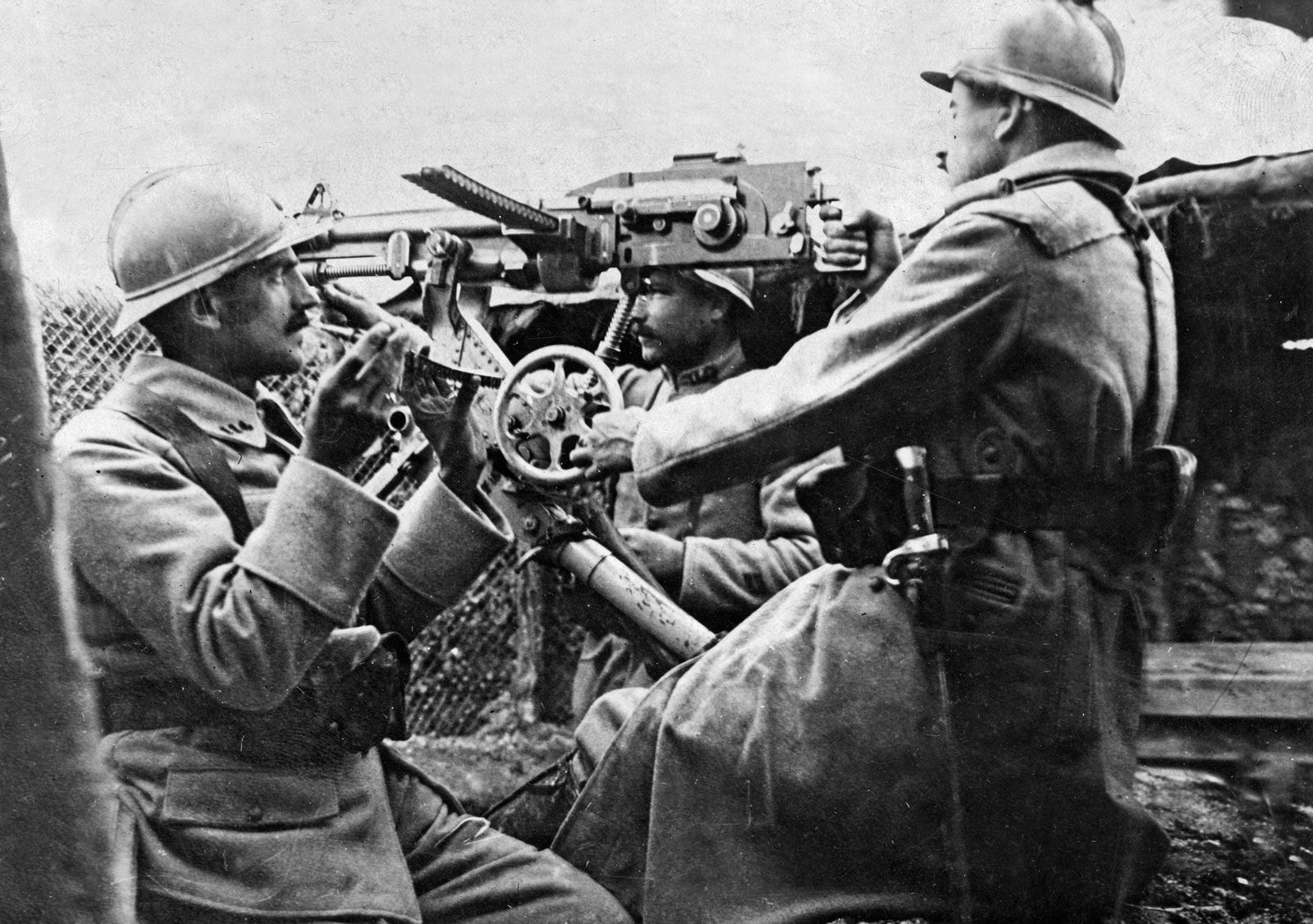
Resources of the Belligerents | The First World War
Even before the American entry, the Allies had an overwhelming superiority in total population and resources. The Central Powers had in their own Continental lands not more than 150 million people; Britain, France, Russia, and Italy in their own Continental lands had at least 125 million more people than their enemies.
-
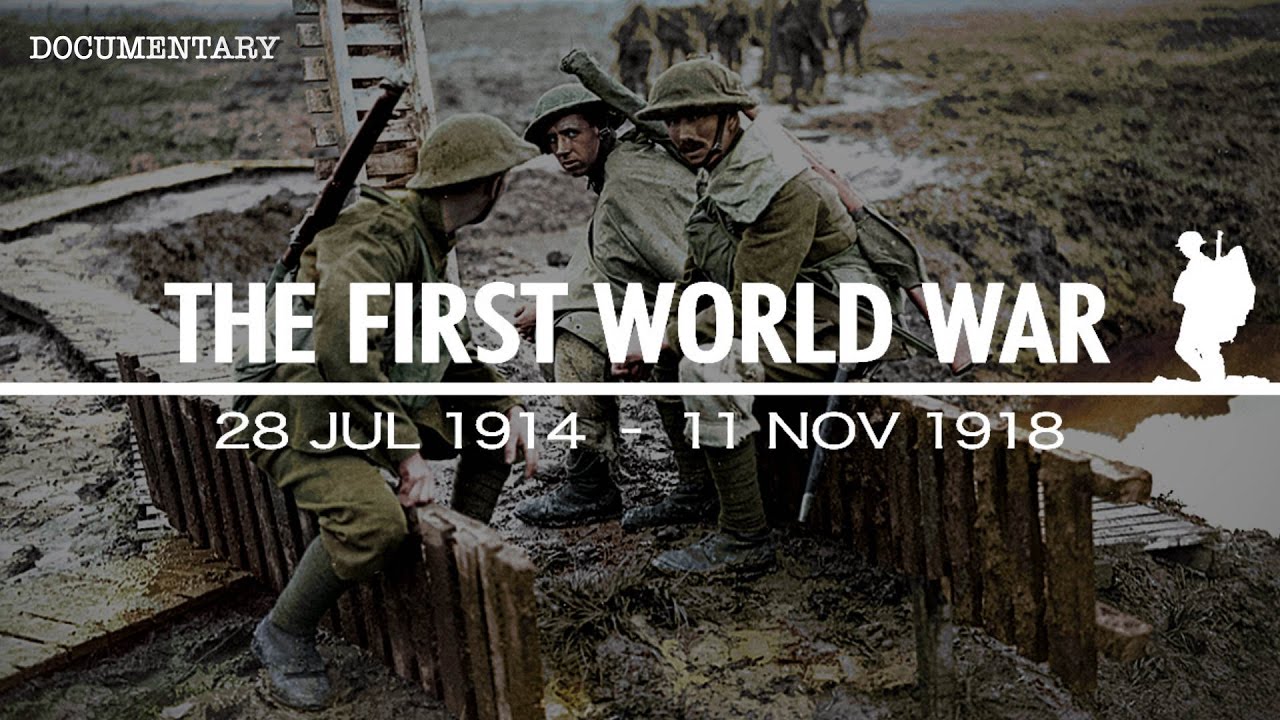
The Course of the War | The First World War
World War I took the lives of 8 million soldiers, and caused far more deaths through malnutrition, war-spawned diseases, and birth deficits arising from economic dislocations and the loss of precisely the age-group most likely to beget children. The collapse of the Russian economy, followed by widespread famine and epidemic, meant that, despite staggering military…
-

Nationalism | The First World War
Why did war begin precisely where and as it did? Need all the nations that were drawn into it have participated? Which nation was primarily responsible for causing the war? Within that nation, which groups, which leaders? Given war, need it have taken the form that it did? In part because the victor writes the…
-
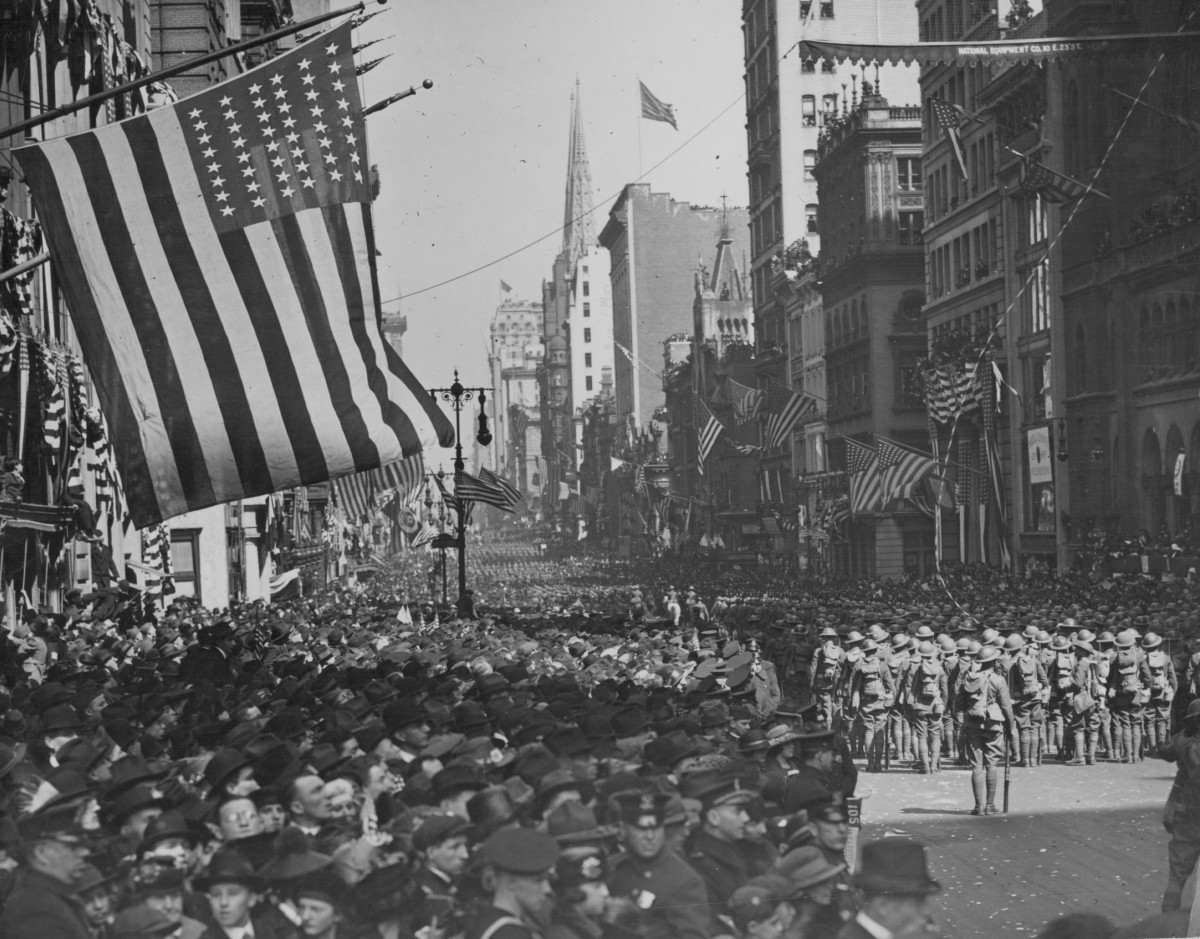
The Entry of Other Powers | The First World War
By August 6, when Austria declared war on Russia, all the members of the Triple Alliance and the Triple Entente had entered the war, with the exception of Italy, which declared neutrality. The Central Powers of Germany and Austria-Hungary stood against the Allies—Russia, France, Britain, and Serbia.
-
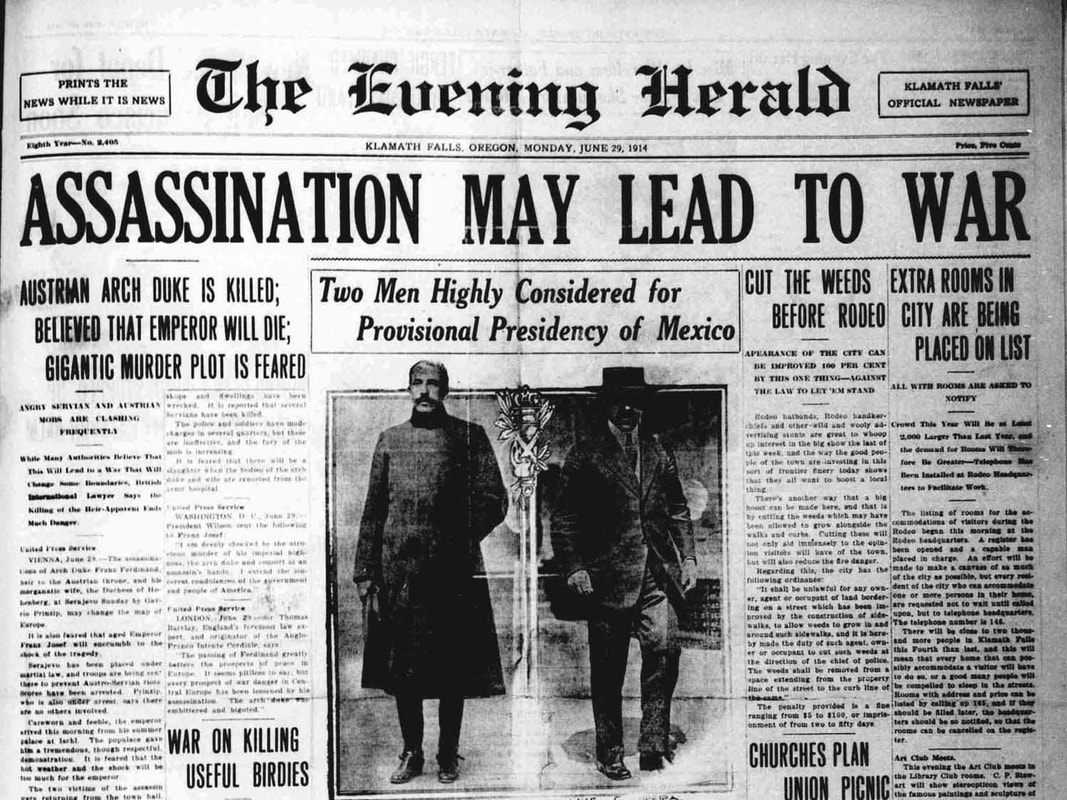
The Final Crisis, July-August 1914 | The First World War
The diplomats and statesmen were drawn into war because they believed that a diplomatic defeat or loss of face for their nation was worse than war. Austria-Hungary believed that the Serbian government had had some suspicion of Princip’s assassination plot and should have given Austria warning.
-

Triple Alliance and Triple Entente, 1879-1918 | The First World War
After 1871 Bismarck sought to isolate France diplomatically by building a series of alliances from which it was excluded. He sought to keep on good terms with both Austria and Russia, and, what was more difficult, to keep both these powers on good terms with each other. Since both wanted to dominate the Balkans, Bismarck’s…
-
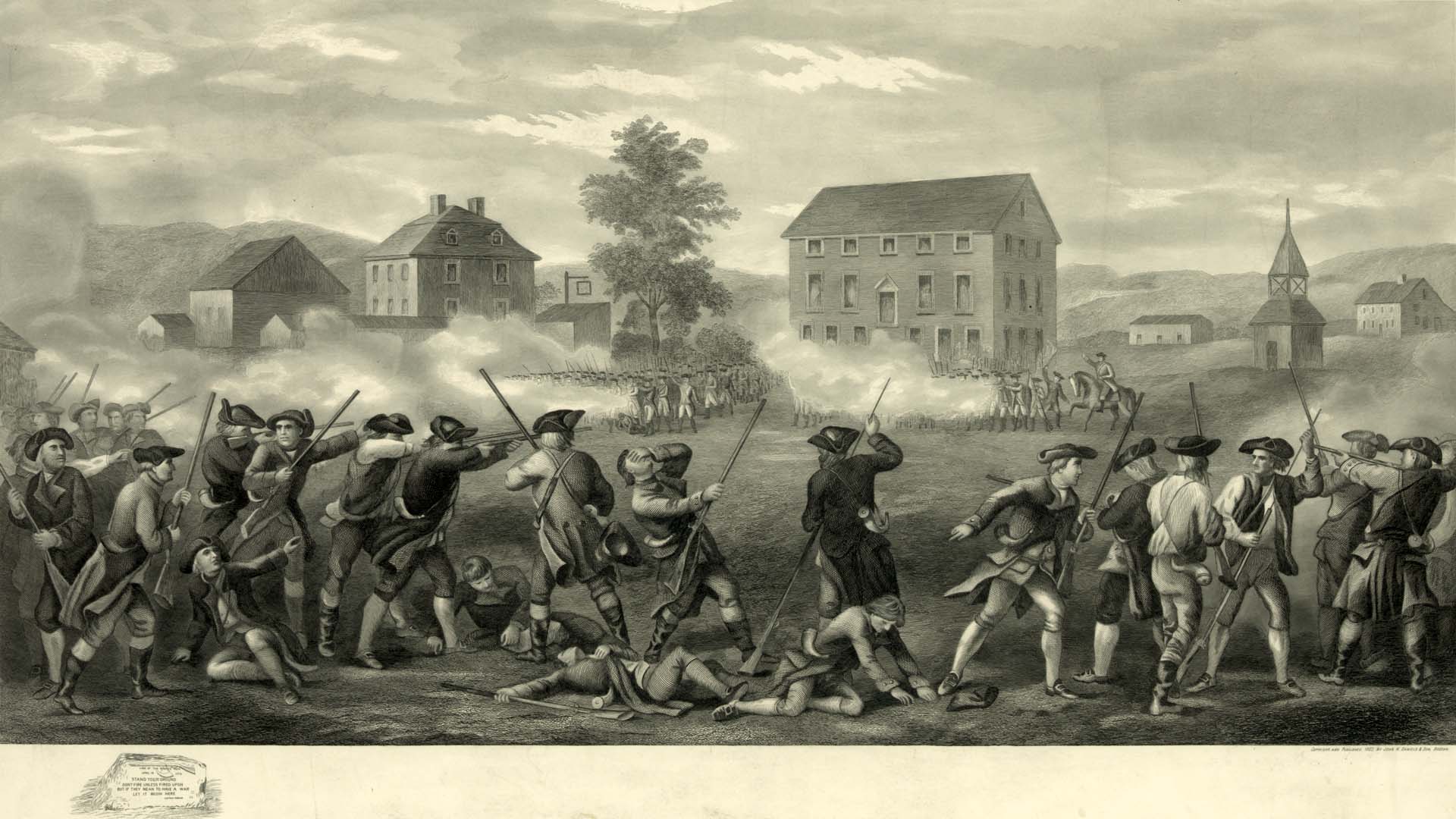
Shifting National Self-Images | The First World War
Nationalism and the accompanying shifts in the balance of power both influenced and were profoundly influenced by public opinion, often shaped by the public press. Throughout western Europe and in the United States a jingoistic press, often intent on increasing circulation, competed for “news,” and not all papers were careful to separate the verifiable from…
-
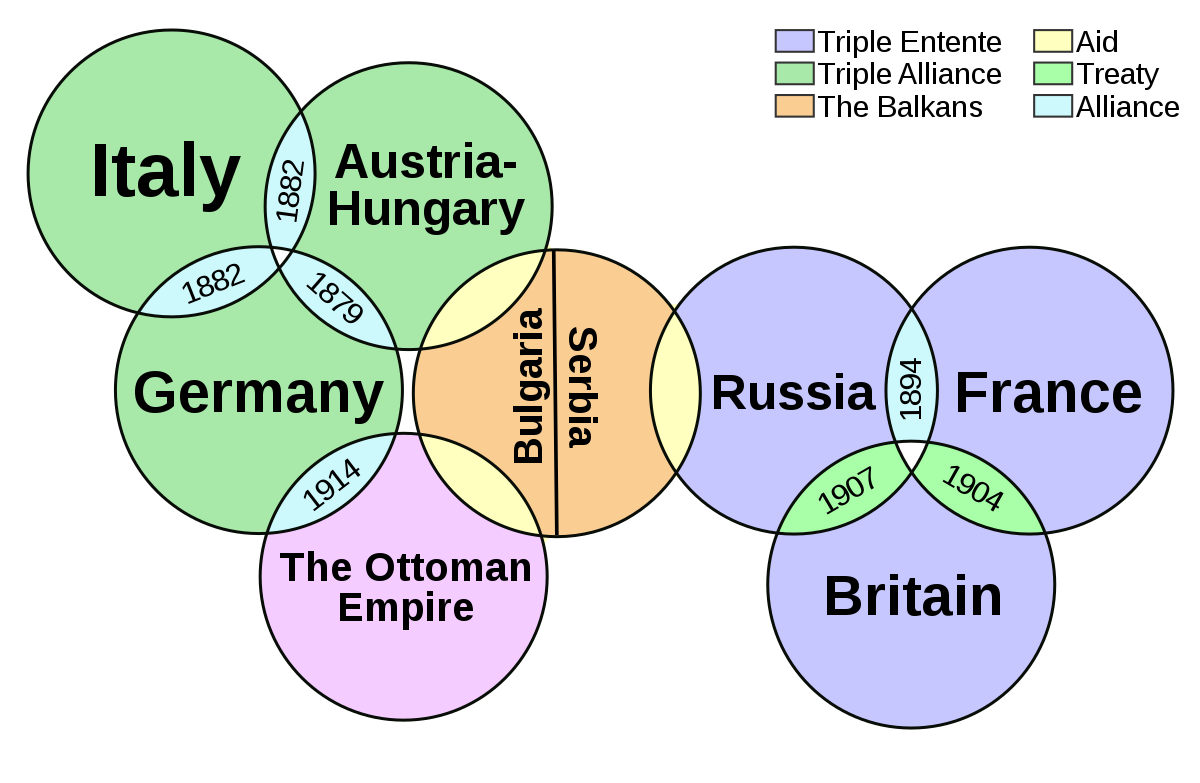
Causes Of The First World War | The First World War
One factor that made war more likely was the unification of Germany and of Italy. The creation of these two new major states altered the balance of power in the European state system; the efforts of statesmen during the next forty years to adjust the system ultimately proved unsuccessful. The older established powers were unwilling…
-
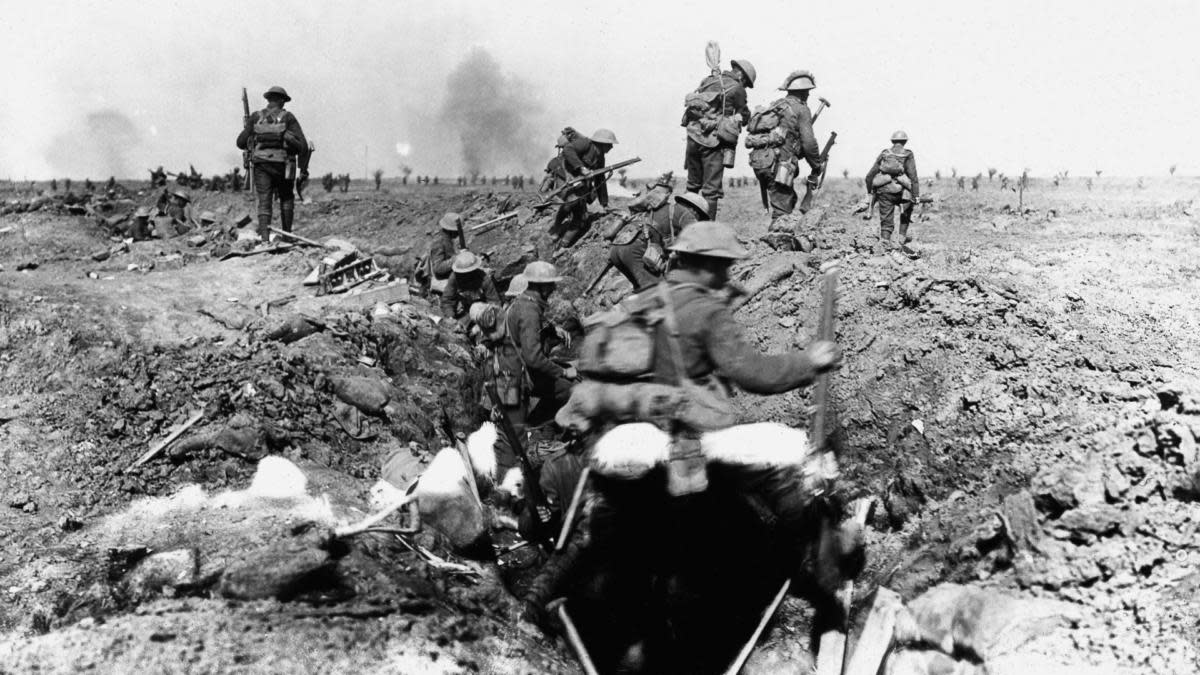
The First World War
In June 28, 1914, the Habsburg arch duke Francis Ferdinand, heir to the throne of Austria-Hungary, and his wife, Sophie Chotek, were assassinated in the streets of Sarajevo, capital of the province of Bosnia, which had been occupied by Austria-Hungary since 1878. The assassin, Gavrilo Princip (1895-1918), was a Serbian nationalist. The Austro-Hungarian government, alarmed…
-
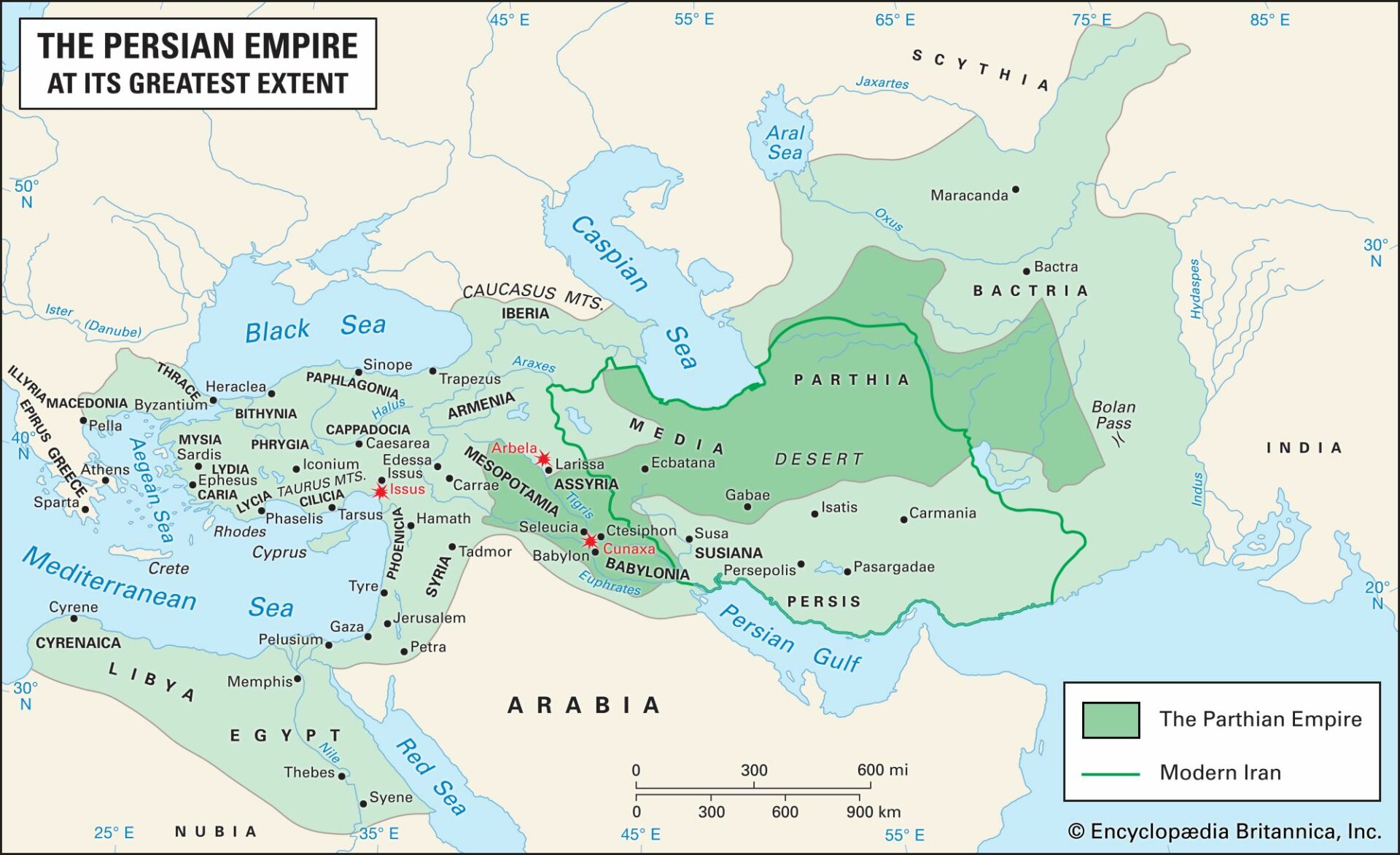
Summary | Modern Empires and Imperialism
In the nineteenth century Britain emerged as a parliamentary democracy. The Reform Bills of 1832 and 1867 accomplished revolutionary changes without violence. The cabinet controlled Parliament; representation was increased through the extension of suffrage and the reform of electoral districts. In the stable political atmosphere of England, the two-party system grew. Disraeli and Gladstone, leaders…
-
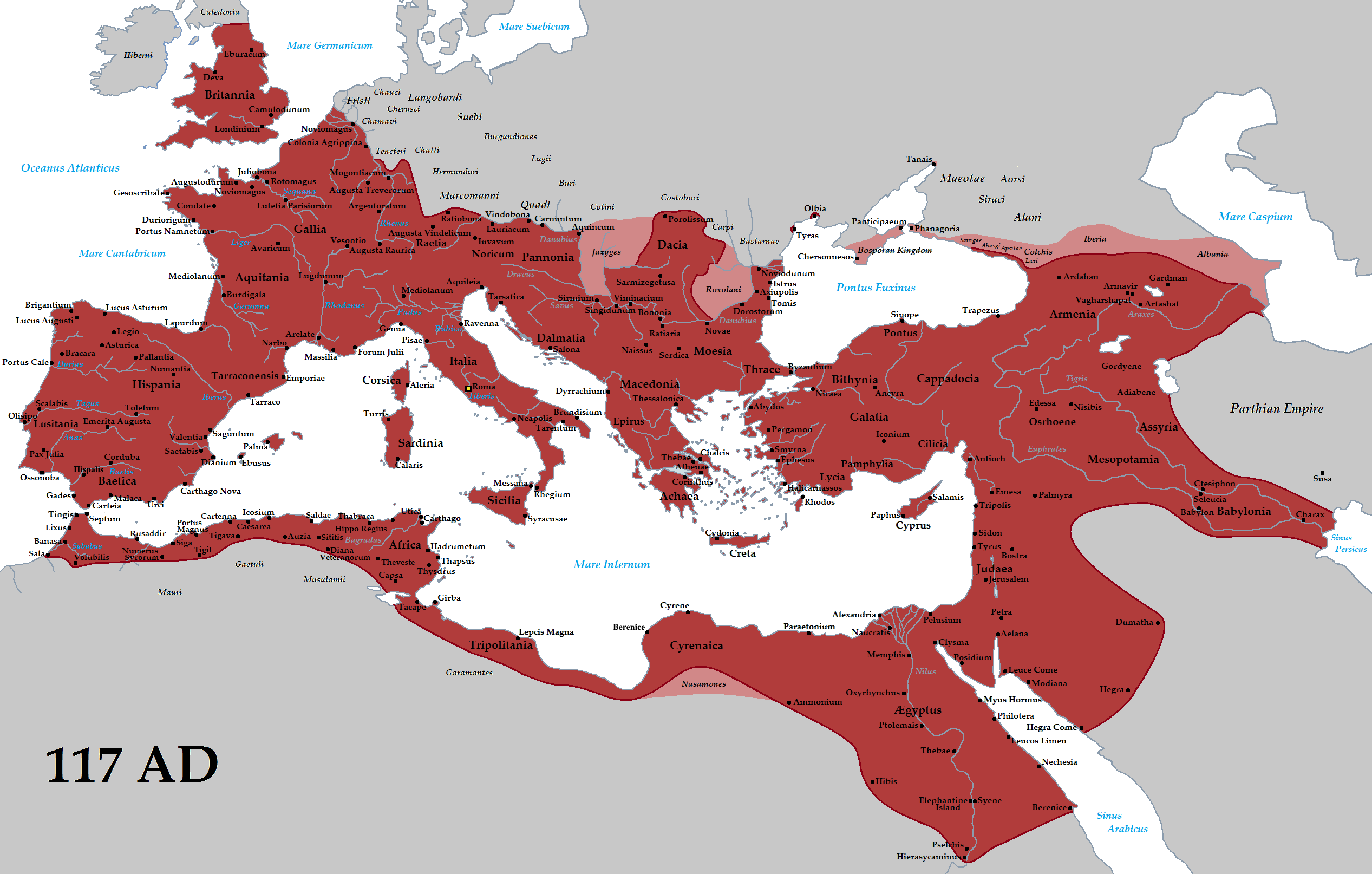
Empire Challenged | Modern Empires and Imperialism
By 1914 it was quite clear that many non-European peoples, including the colonies of exploitation, were beginning to reject claims of white supremacy. The concept of nationalism, new outside of Europe and the Americas, had continued to spread. In the early twentieth century it was most evident in Japan and, to some extent, China, Egypt,…
-
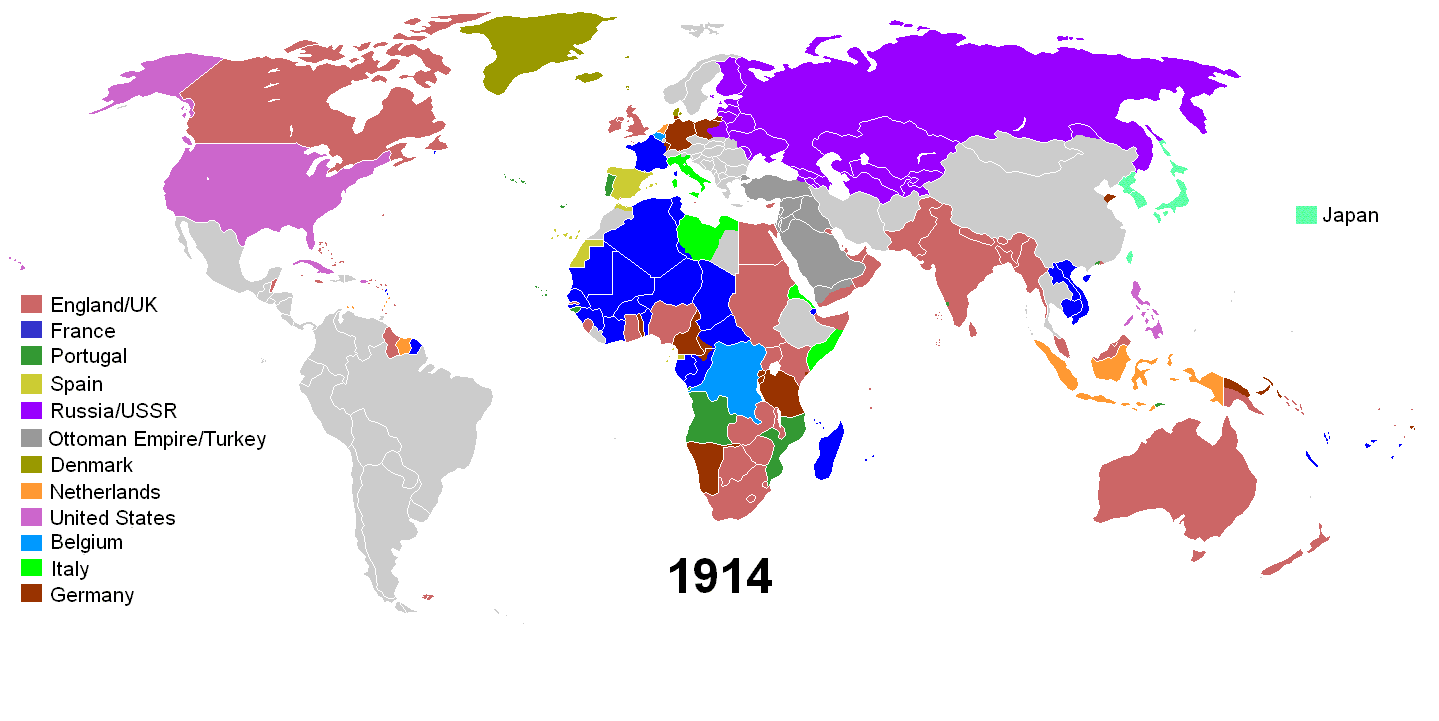
The Japanese Empire | Modern Empires and Imperialism
One more empire was being formed during the decades before World War I, the only modern empire to be created by a non-European people. Even during their long, self-imposed isolation the Japanese had maintained an interest in Western developments.
-
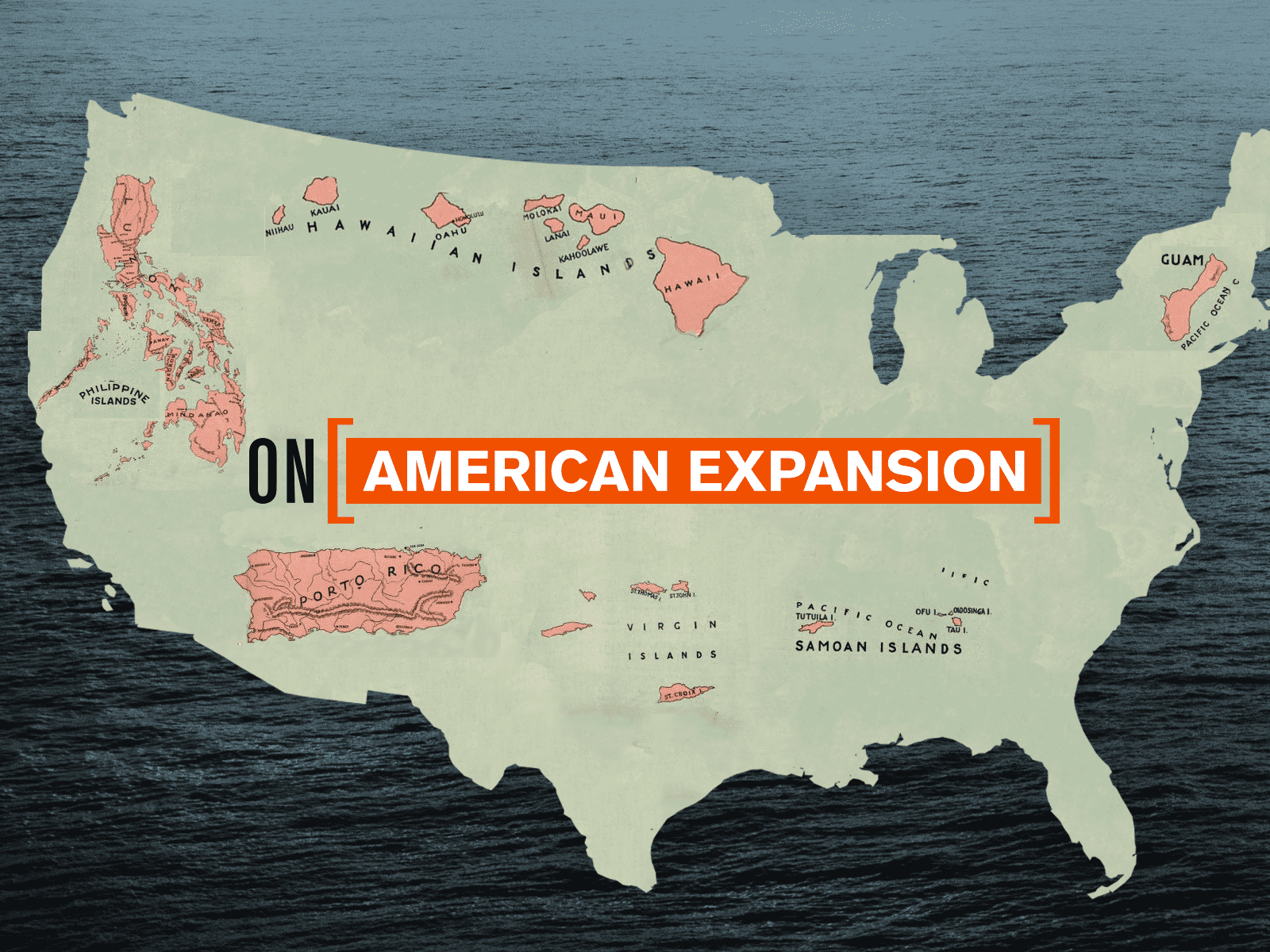
The United States | Modern Empires and Imperialism
While the industrial powers of Europe were expanding overseas, the United States acquired by purchase and conquest the remainder of its Manifest Destiny—a dominion from sea to sea that was “to bring the blessings of liberty” to the entire continent. The United States believed it had a moral obligation to expand in order to extend…
-

Other Continental Powers | Modern Empires and Imperialism
Italy got very little out of the partition of Africa. Tunis, which Italy coveted, went instead to France. Italy’s major effort centered on the lands at the southern end of the Red Sea, but after the defeat by the Abyssinians in 1896, Italy had to be content with a few thousand square miles, most of…
-
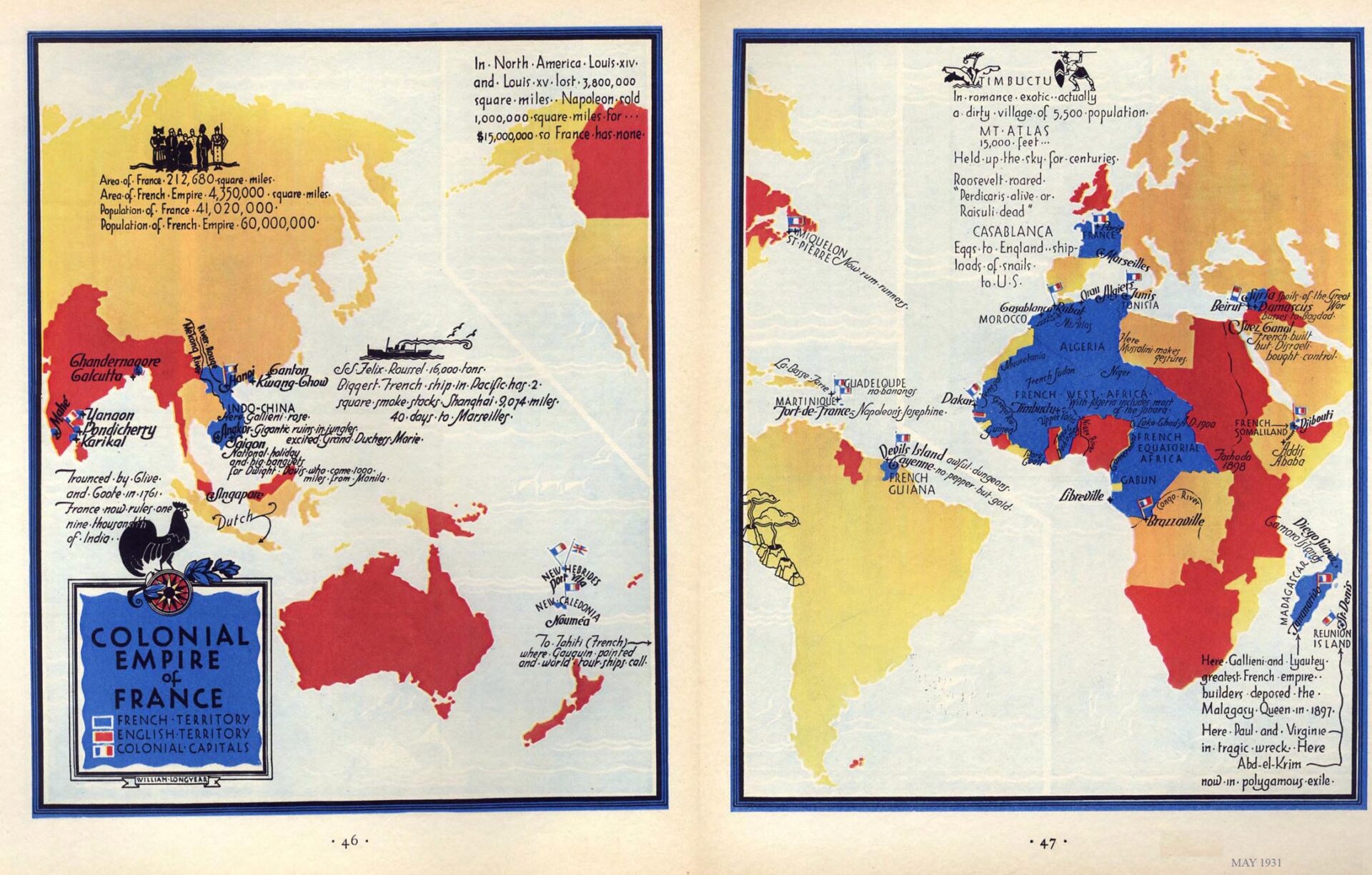
The French Empire | Modern Empires and Imperialism
During the nineteenth century France acquired a colonial empire second in area only to that of the British. France, despite frequent revolutionary changes in government, maintained an imperialist policy that added some 50 million people and close to 3.5 million square miles to the lands under the French flag. This empire was concentrated in North,…
-
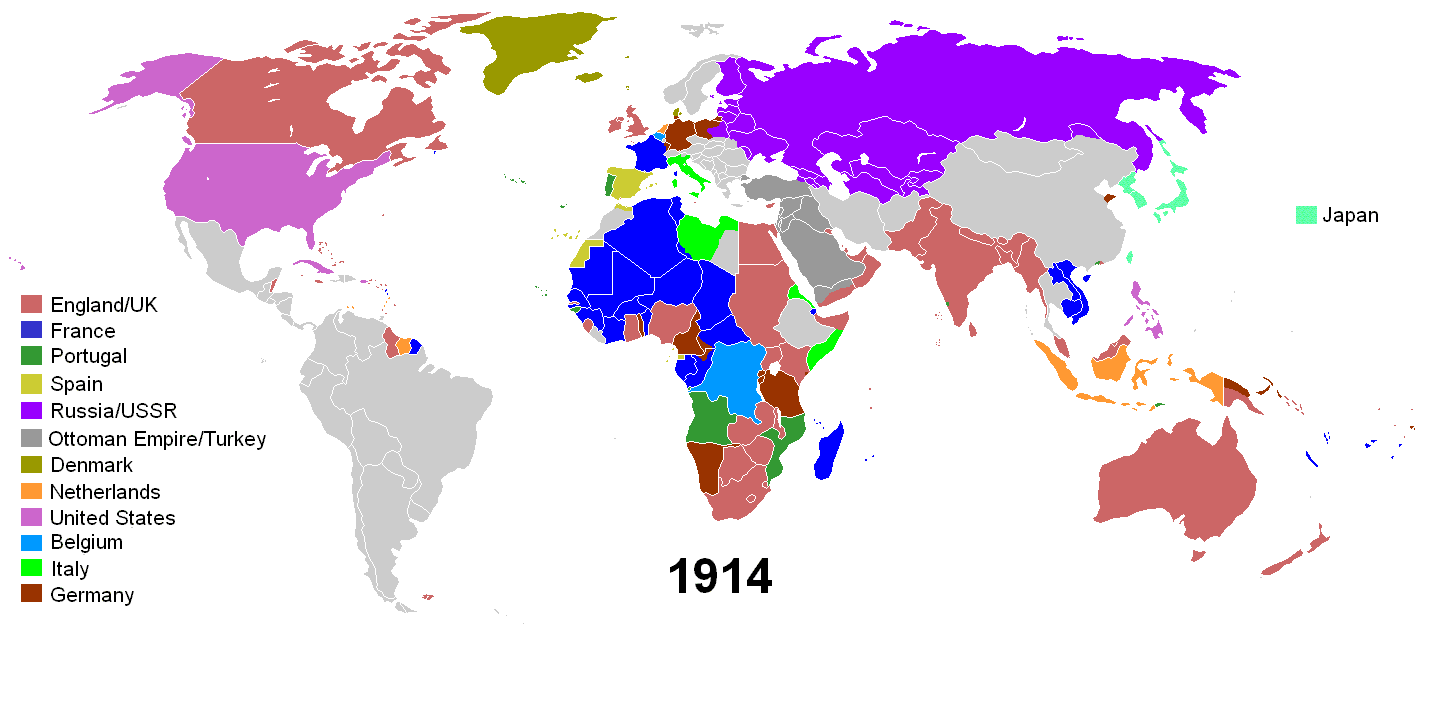
Other Empires | Modern Empires and Imperialism
Most industrial nations competed with the British for imperial riches, responsibilities, and “glory.” France remained Britain’s primary competitor, though Germany, Italy, Belgium, Portugal, the Netherlands, the United States, and Denmark had overseas empires or colonies by the end of the century. Japan, Russia, even remnants of the Spanish empire, remained players in “the great game.”
-
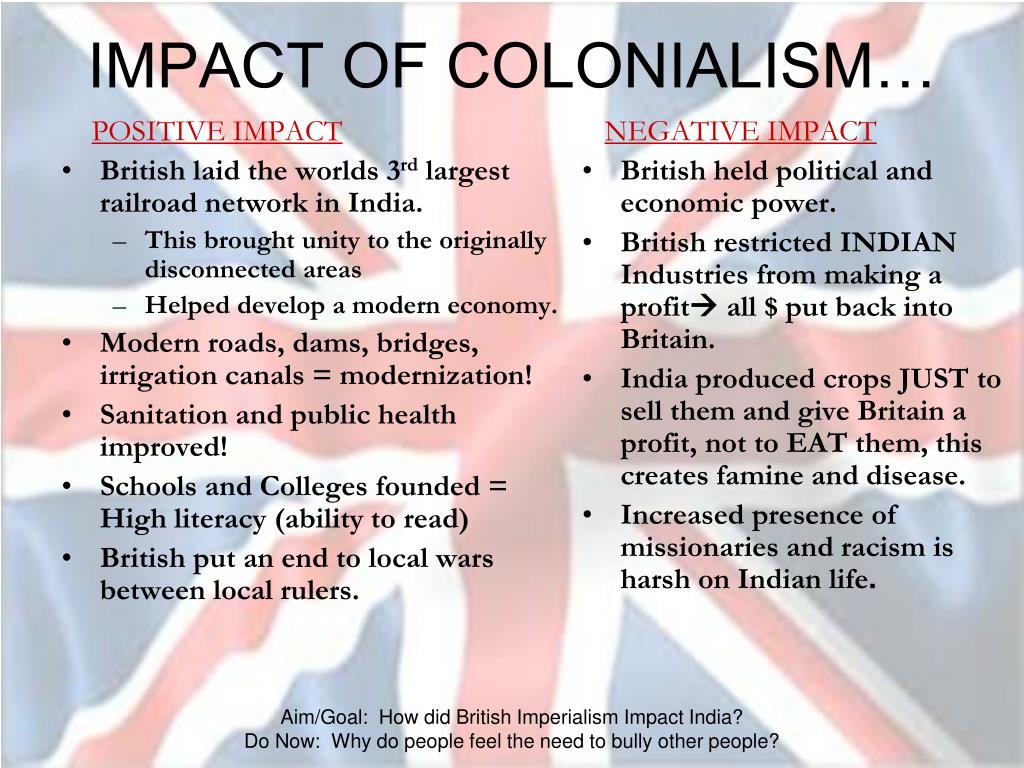
India, the "Crown Jewel of Empire," 1815-1915 | Modern Empires and Imperialism
India was the richest of Britain’s overseas possessions, the center and symbol of empire, as the imaginative Disraeli realized when in 1876 he had Queen Victoria proclaimed empress of India. It was over India that the British most often debated the merits of direct intervention versus indirect control, massive social reform imposed from without versus…
-

Egypt and Africa South of the Sahara, 1859-1914 | Modern Empires and Imperialism
In the late nineteenth century French prospects in Egypt seemed particularly bright. Between 1859 and 1869 the private French company headed by Ferdinand de Lesseps built the Suez Canal, which united the Mediterranean with the Red Sea and shortened the sea trip from Europe to India and the Far East by thousands of miles. The…
-
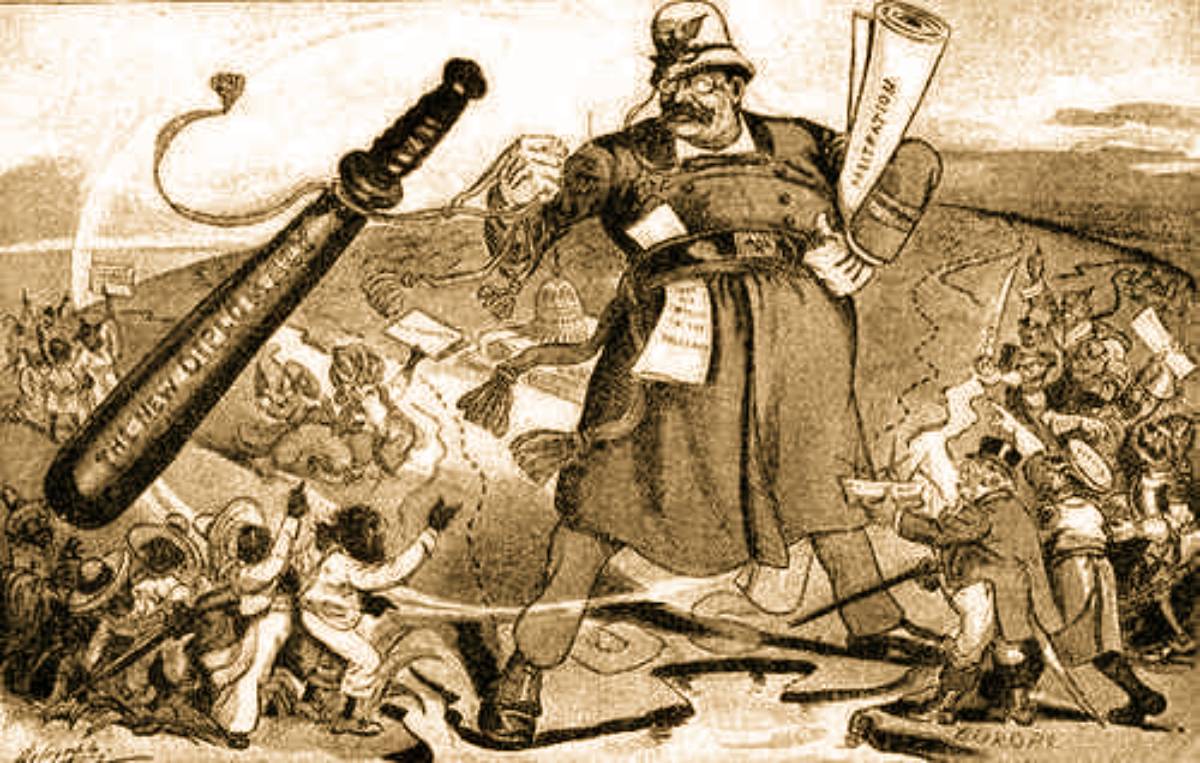
South Africa, 1815-1910 | Modern Empires and Imperialism
The legacy of empire was particularly complex in South Africa, where there were two, not one, white settlement groups. Britain acquired the Cape Colony from the Netherlands in 1815. Because the Cape was strategically important and the climate seemed suited to European settlement, Britishers arrived and soon began to compete for land with the older…
-

Canada, the First Dominion, 1783-1931 | Modern Empires and Imperialism
Most of the precedents by which the British Empire evolved into a commonwealth of self-governing nations were first developed in Canada. Between 1783 and 1931 Canada became the first dominion, fully independent from at least 1931 and probably earlier, and essentially self-governing from 1867.
A History of Civilization
